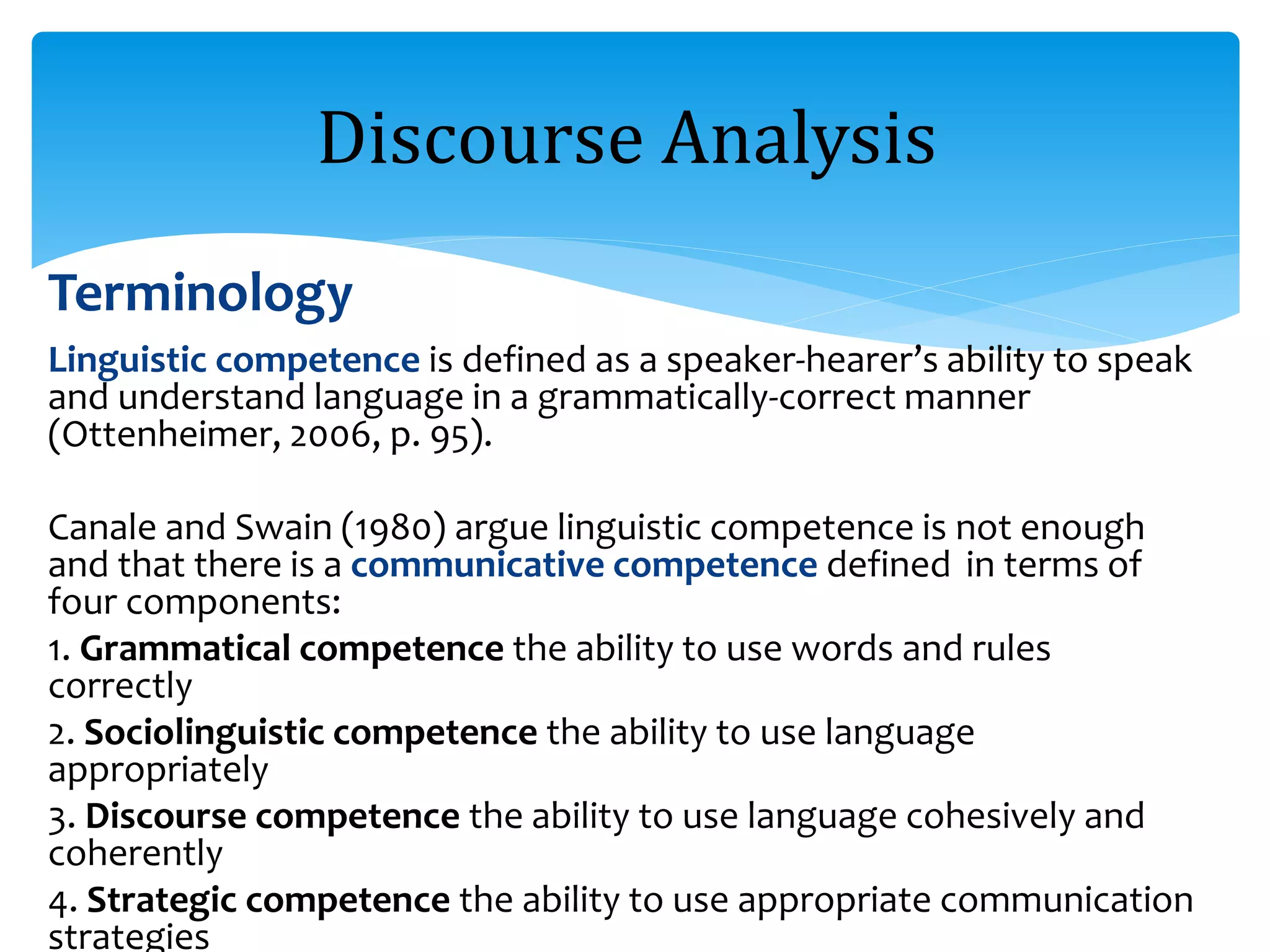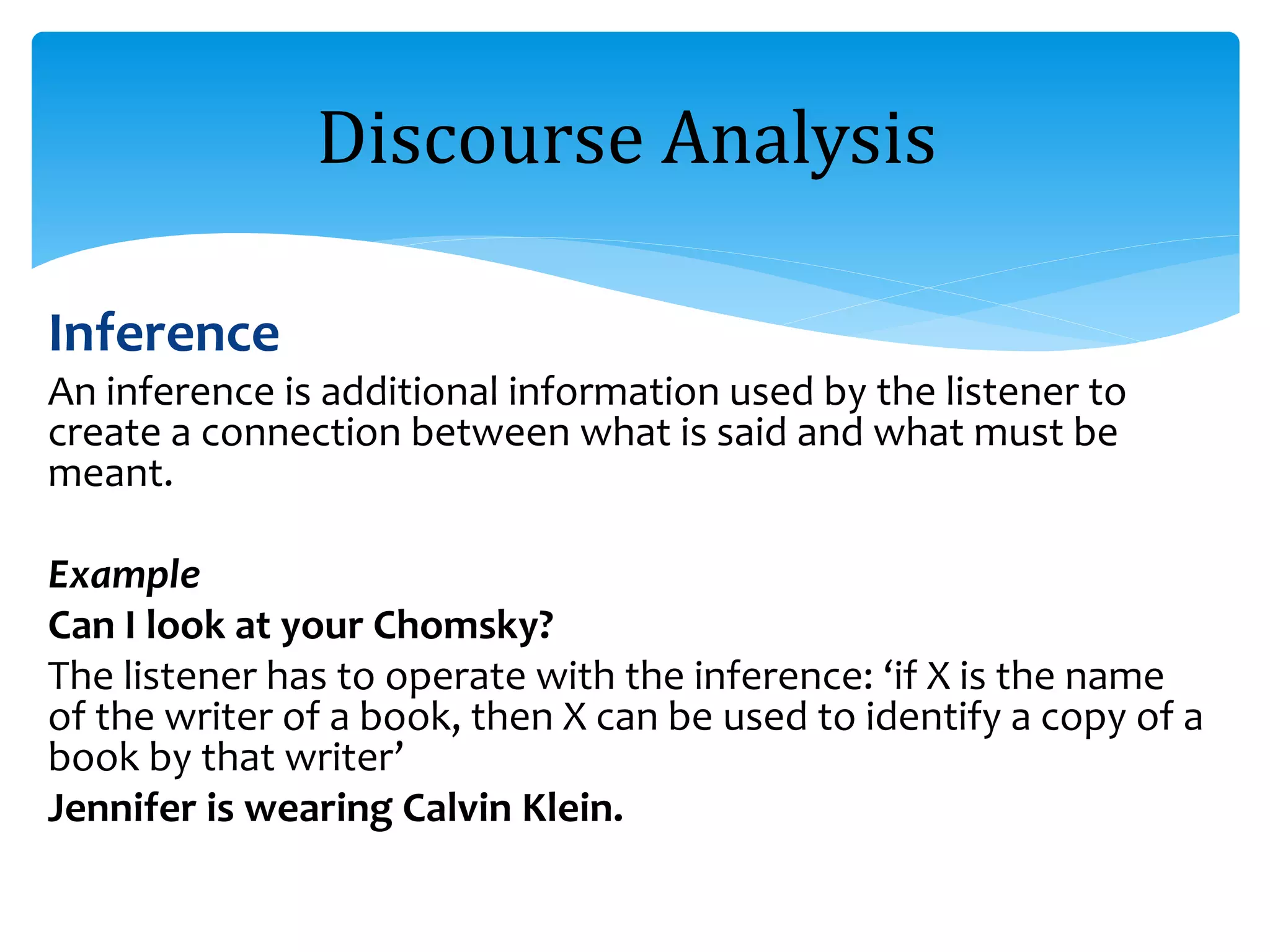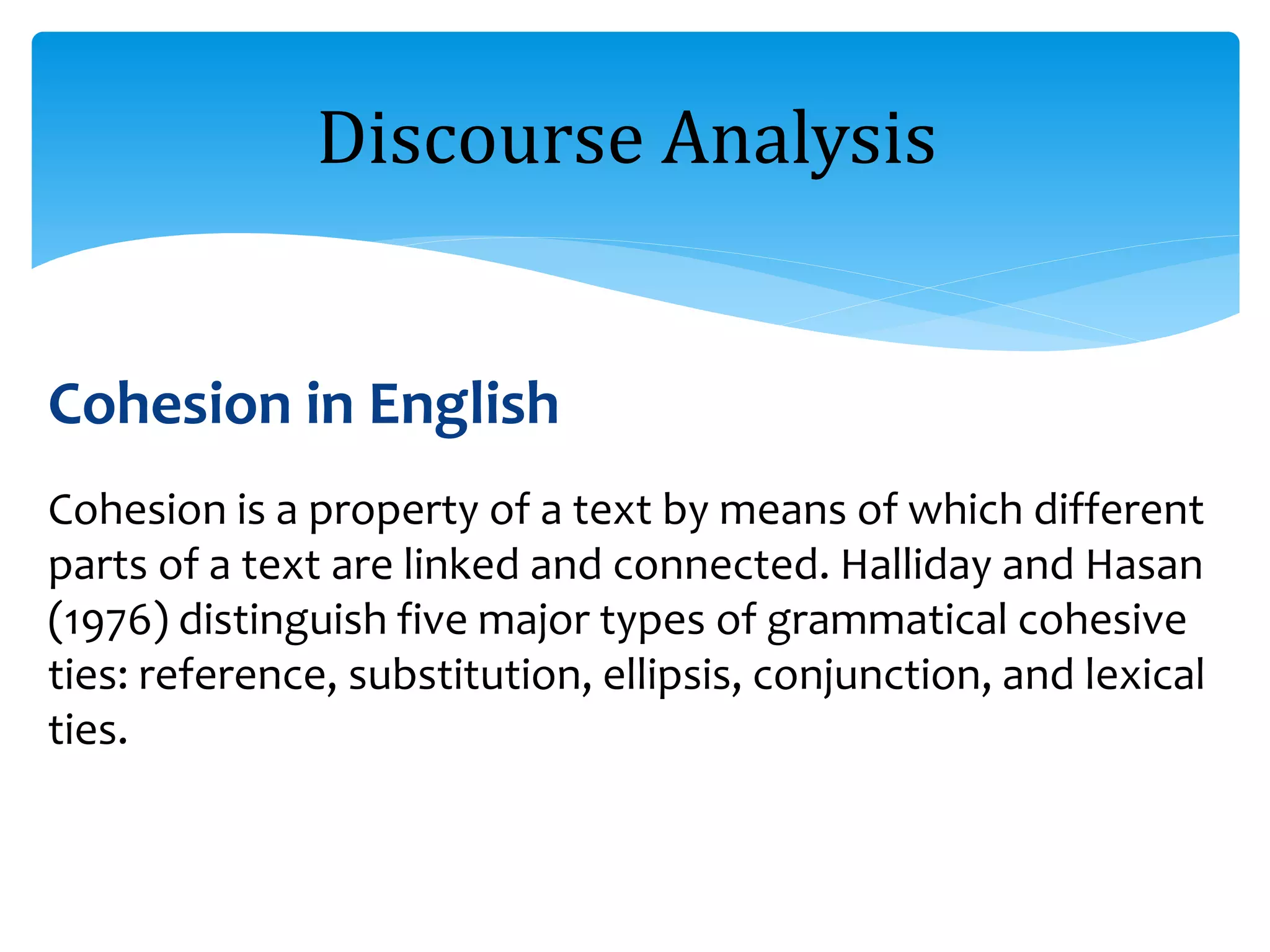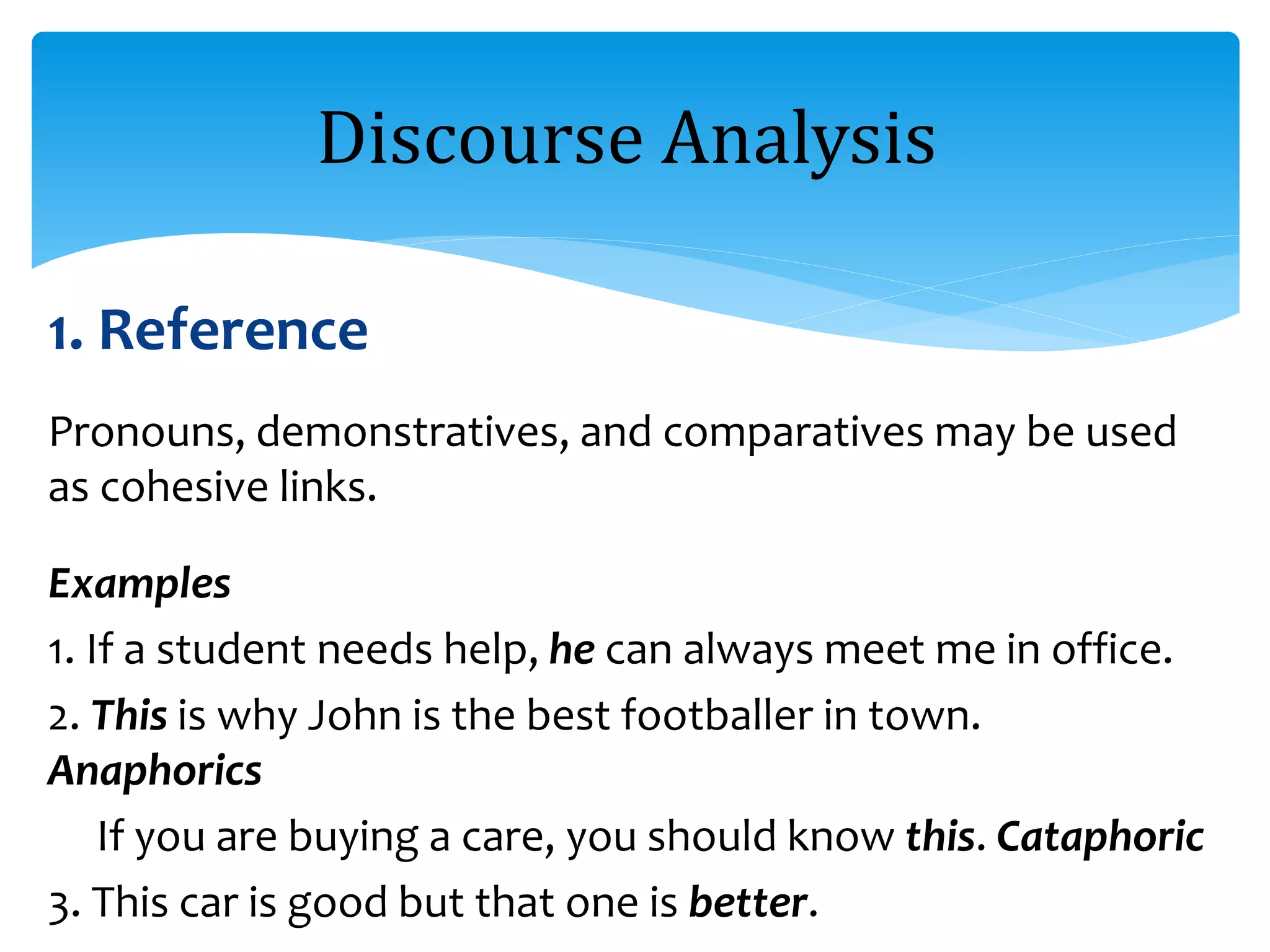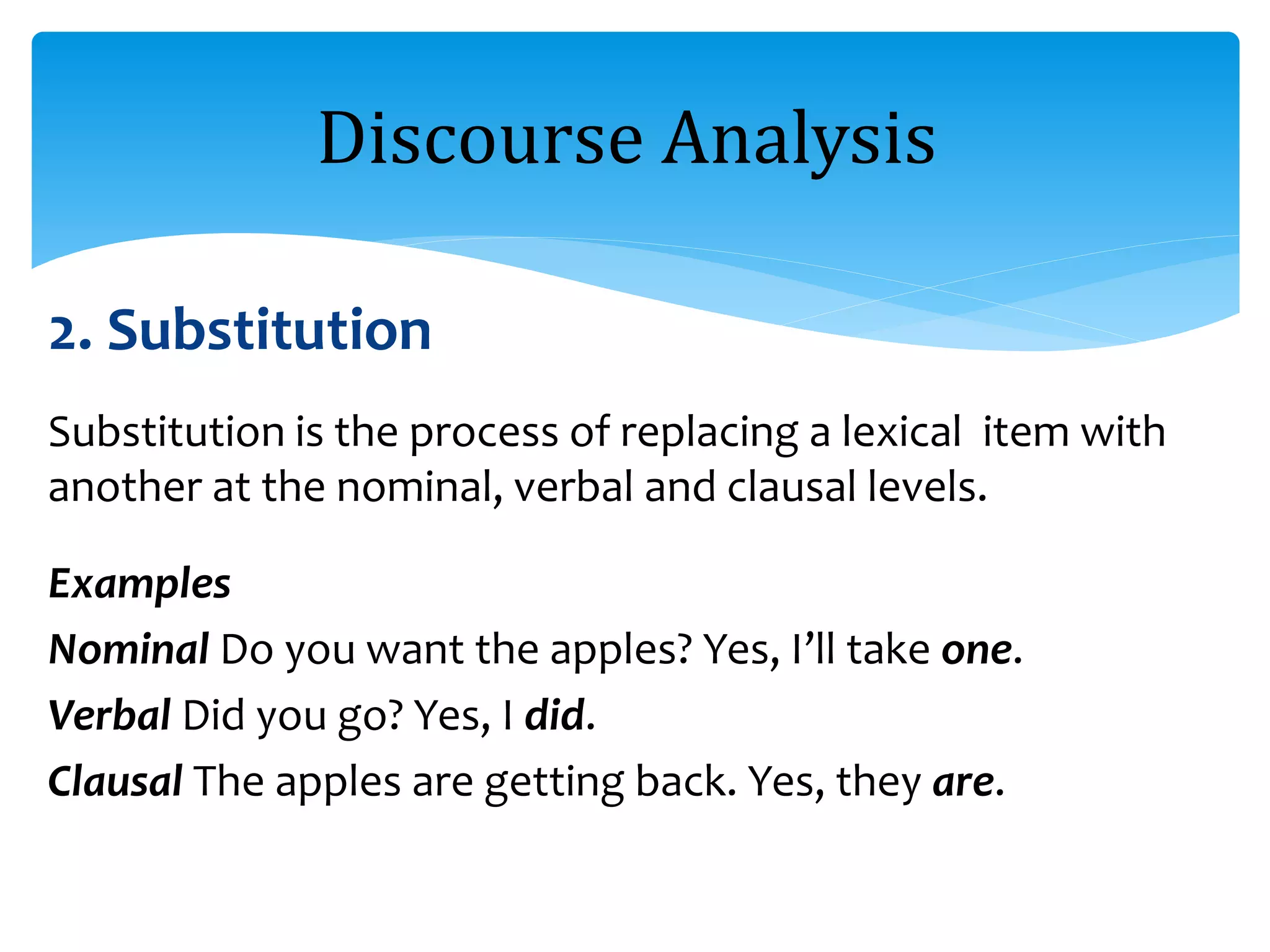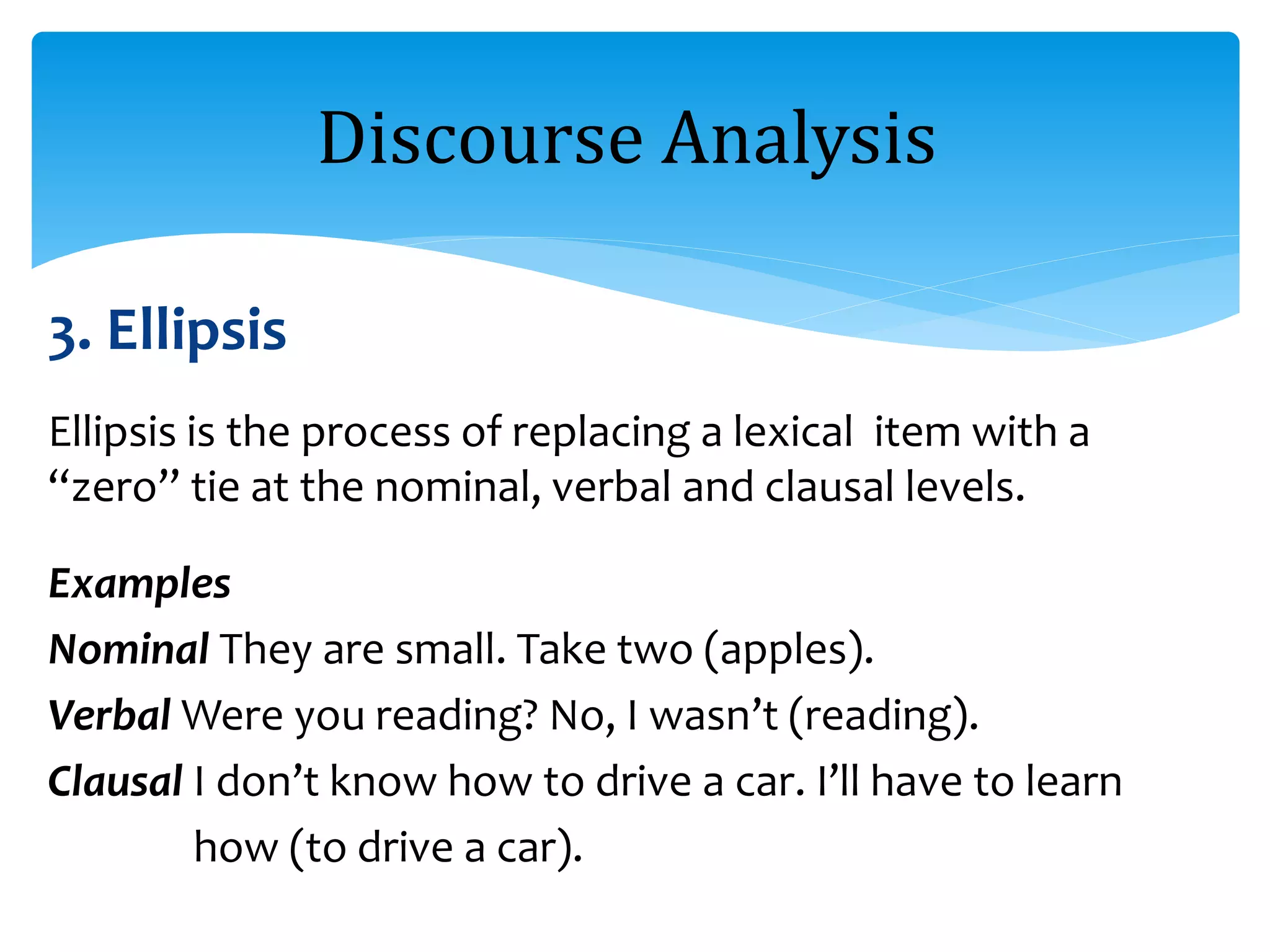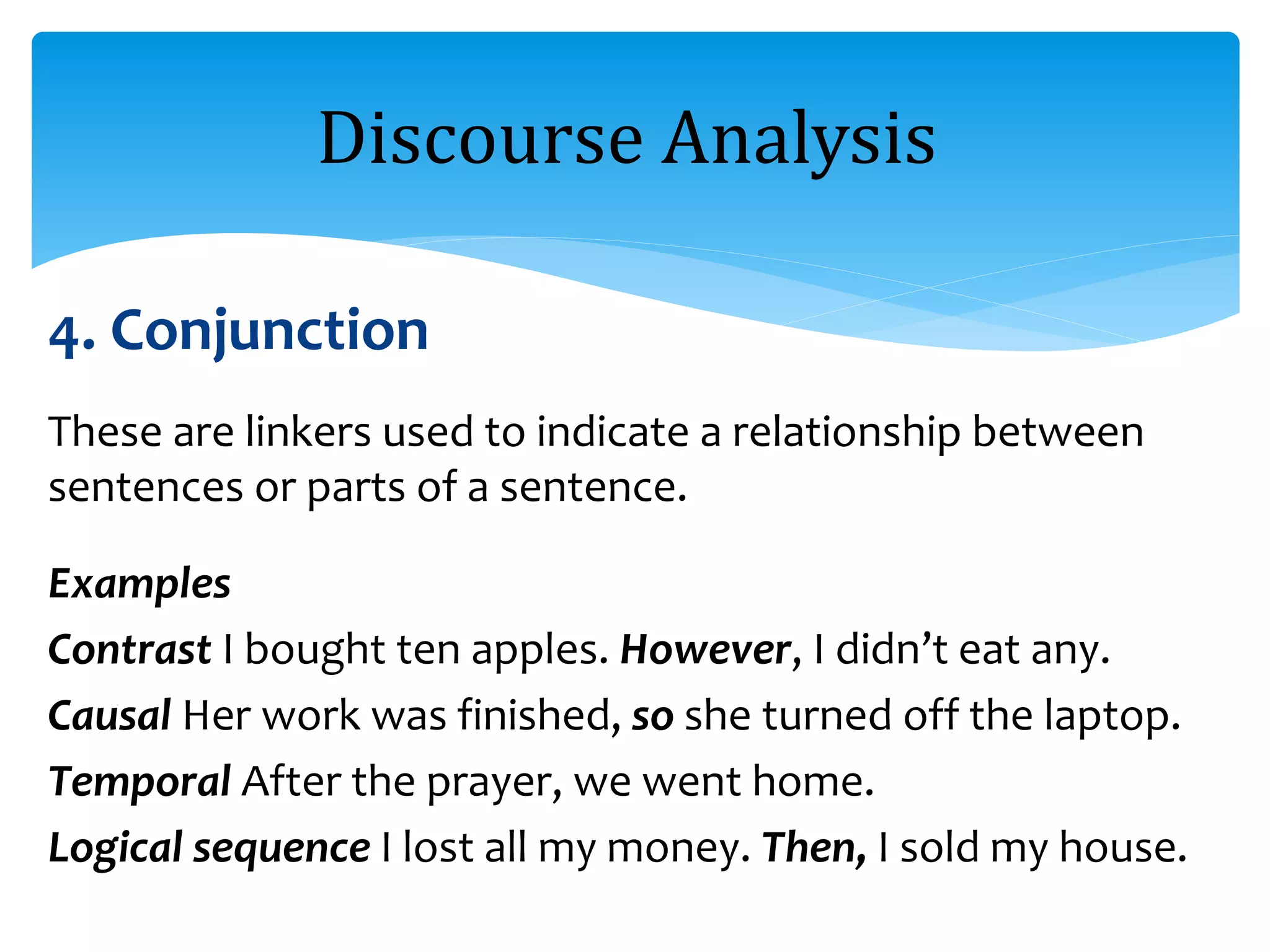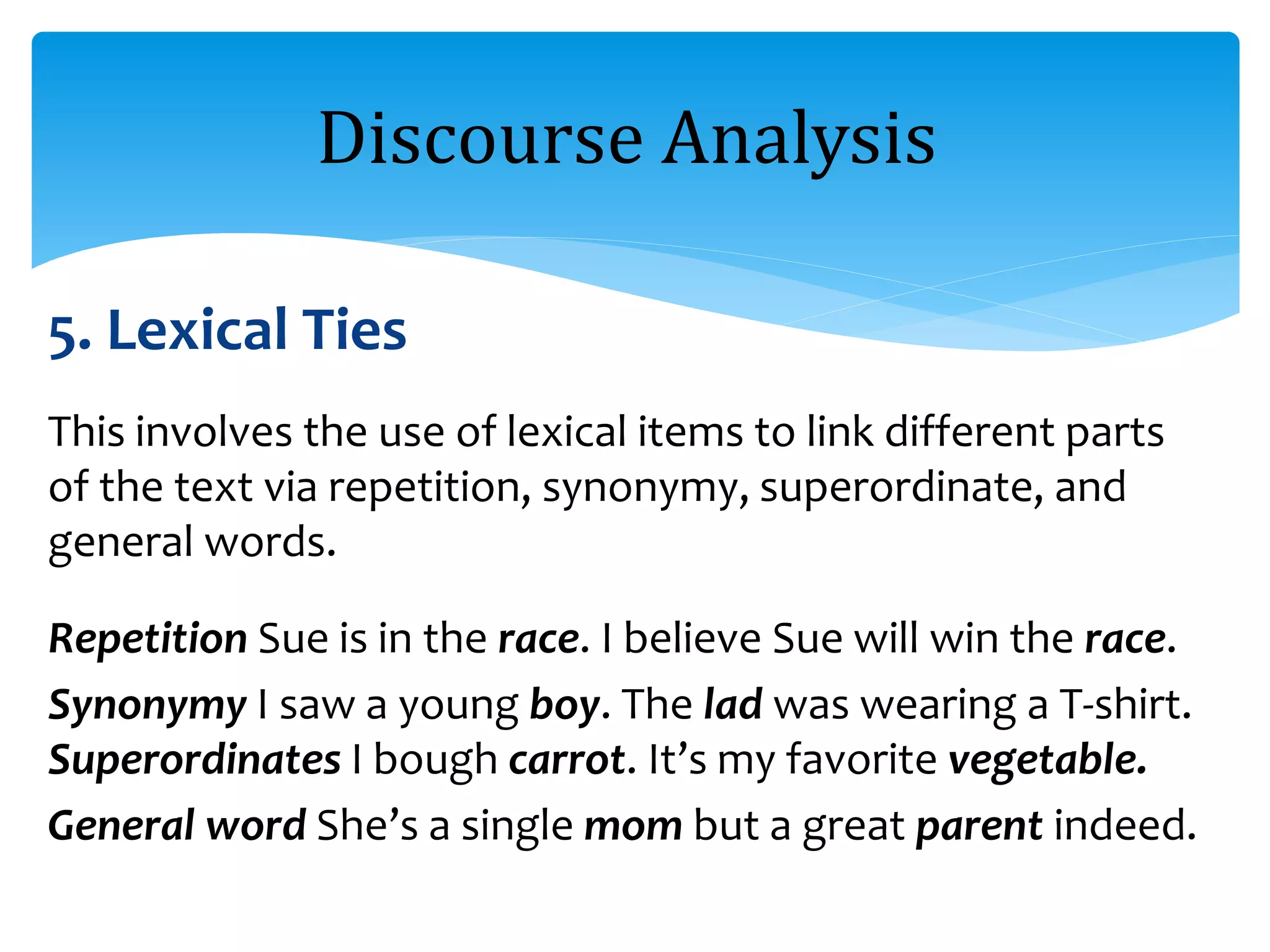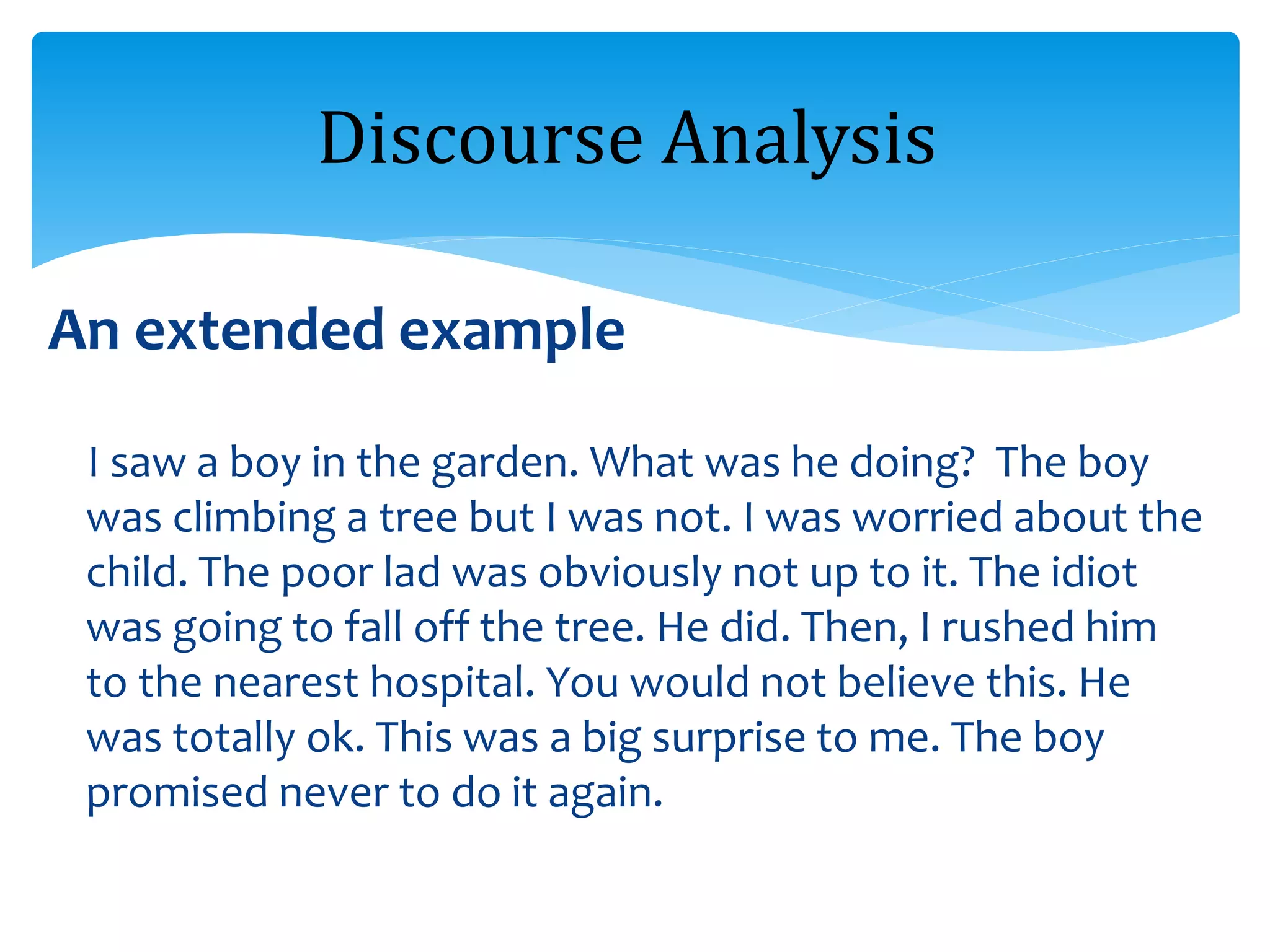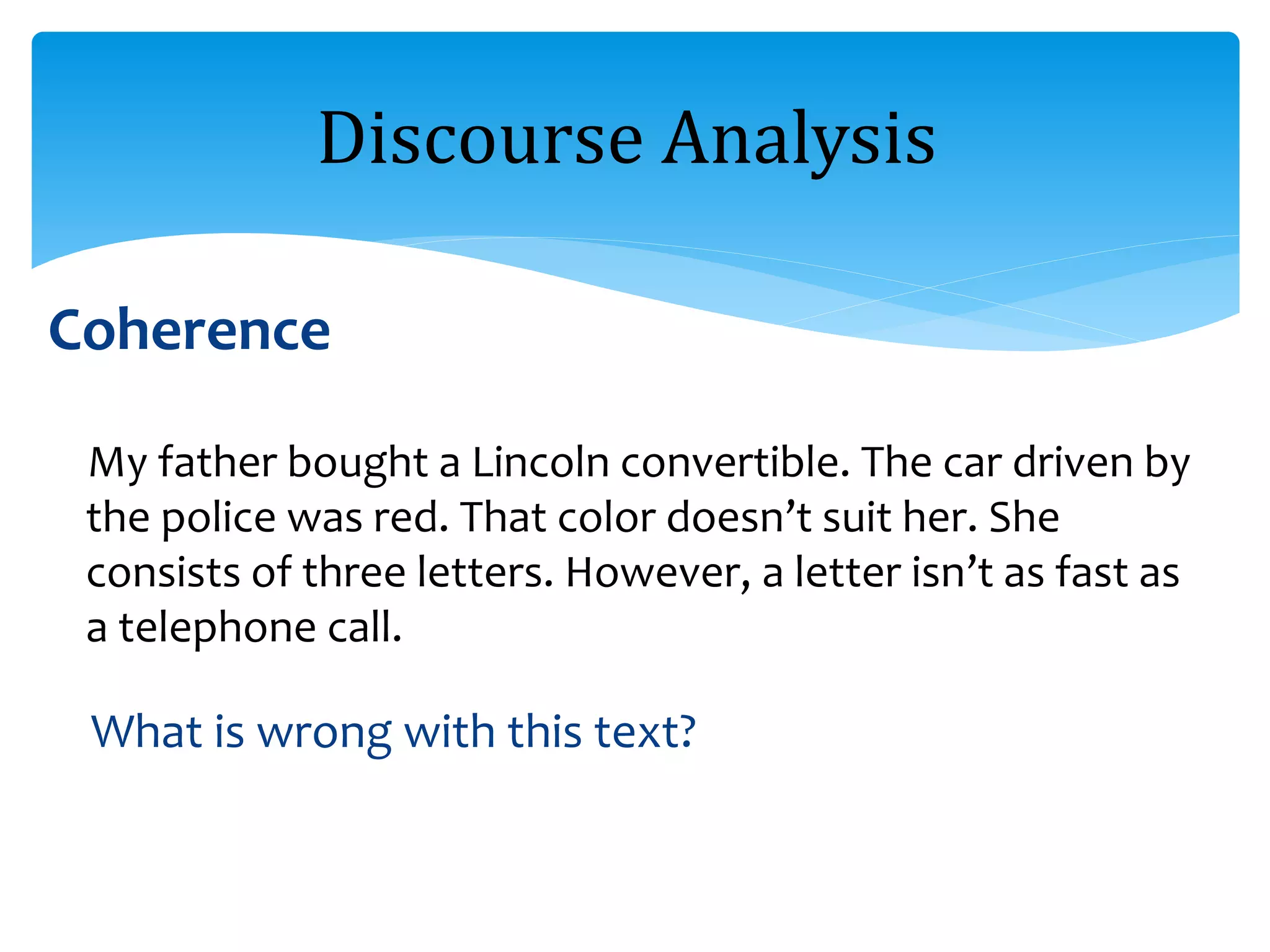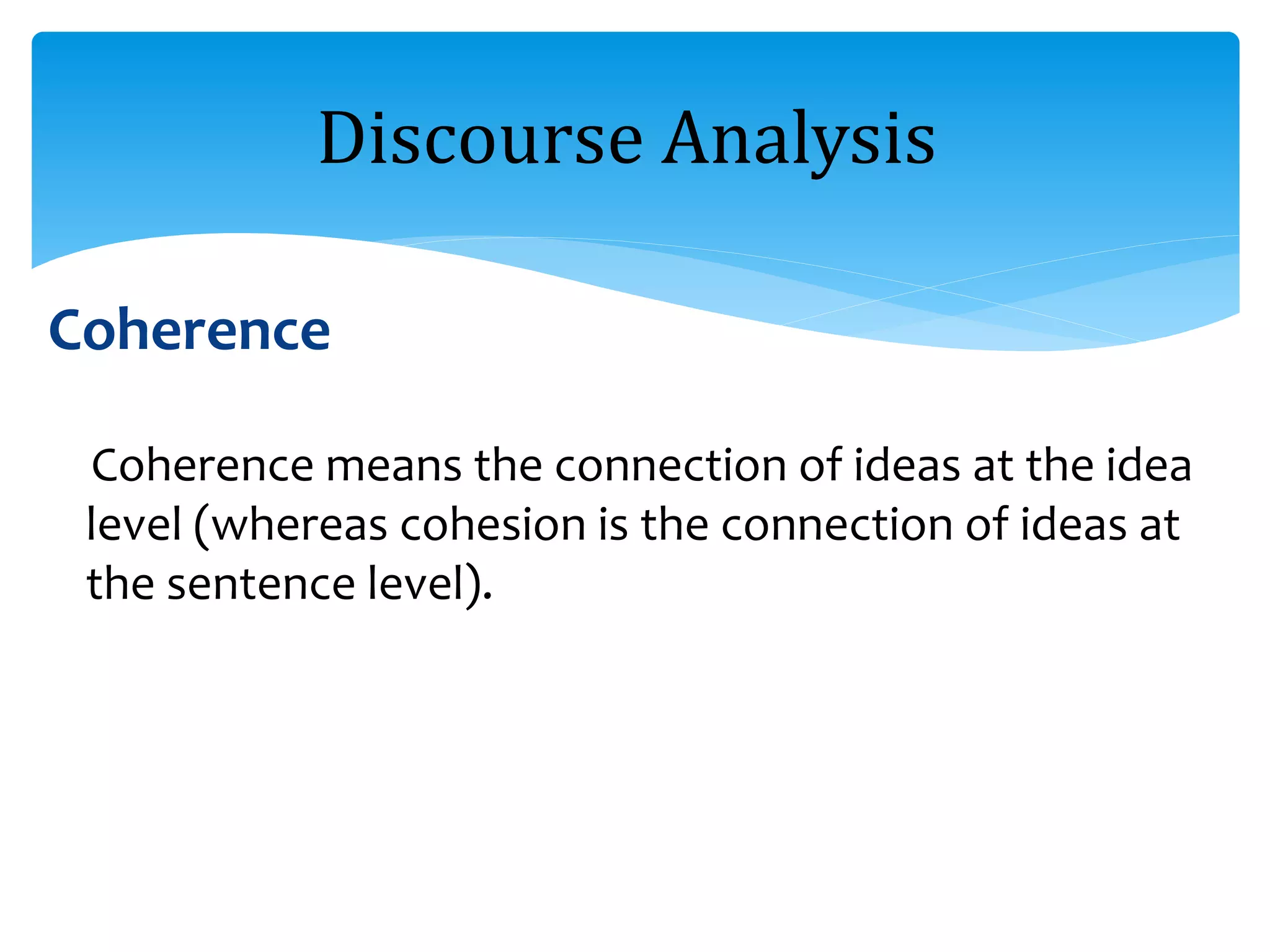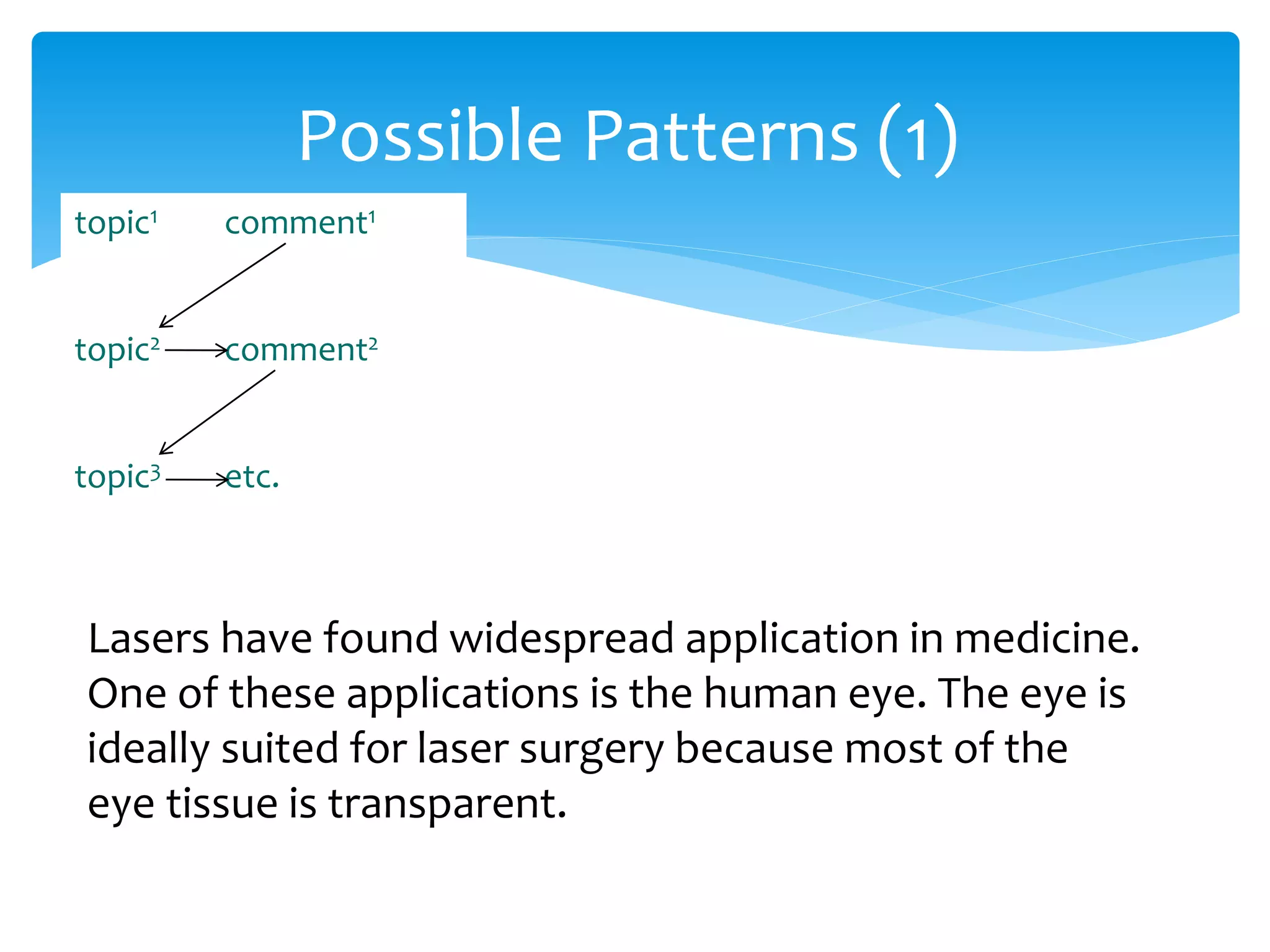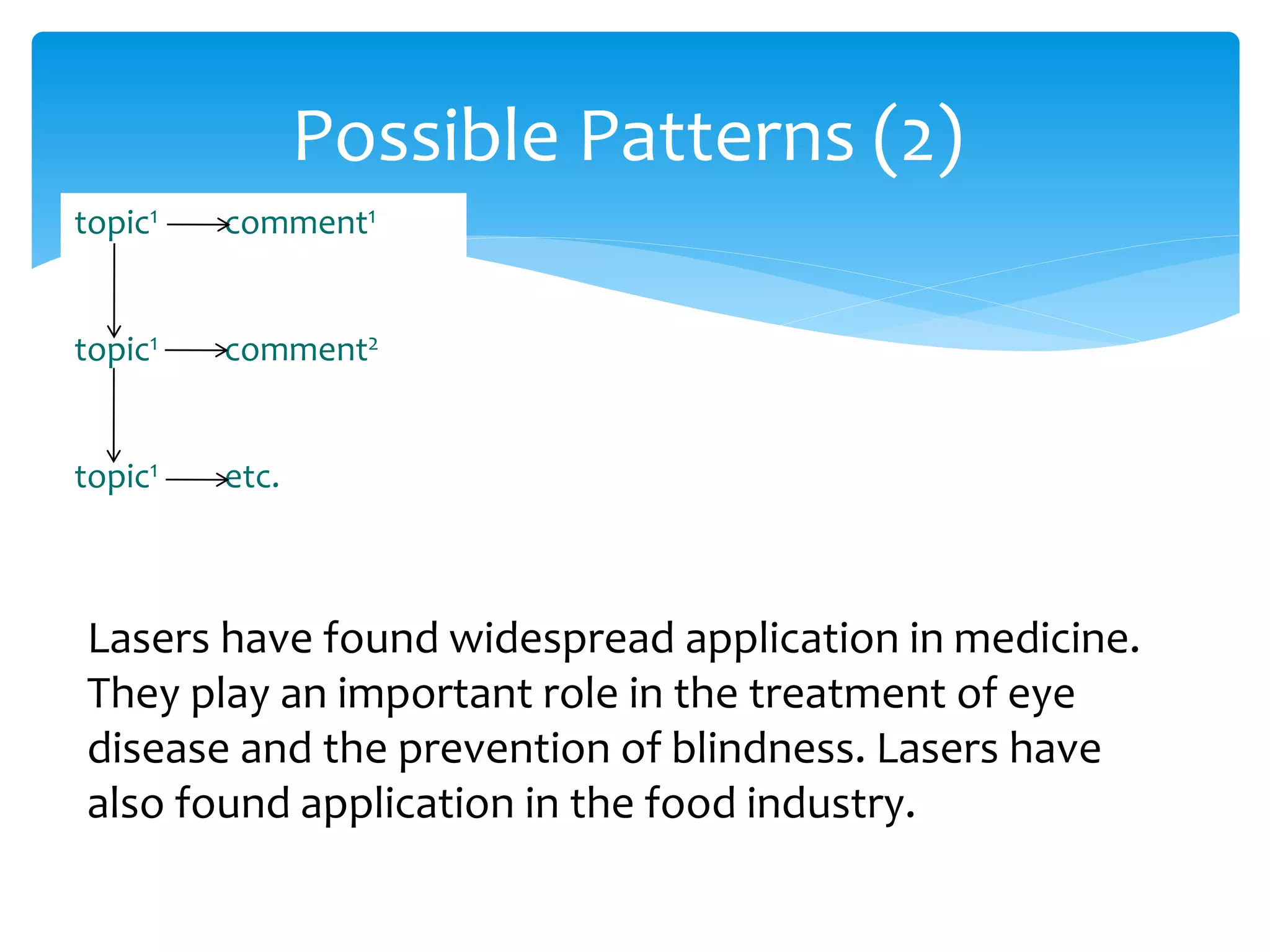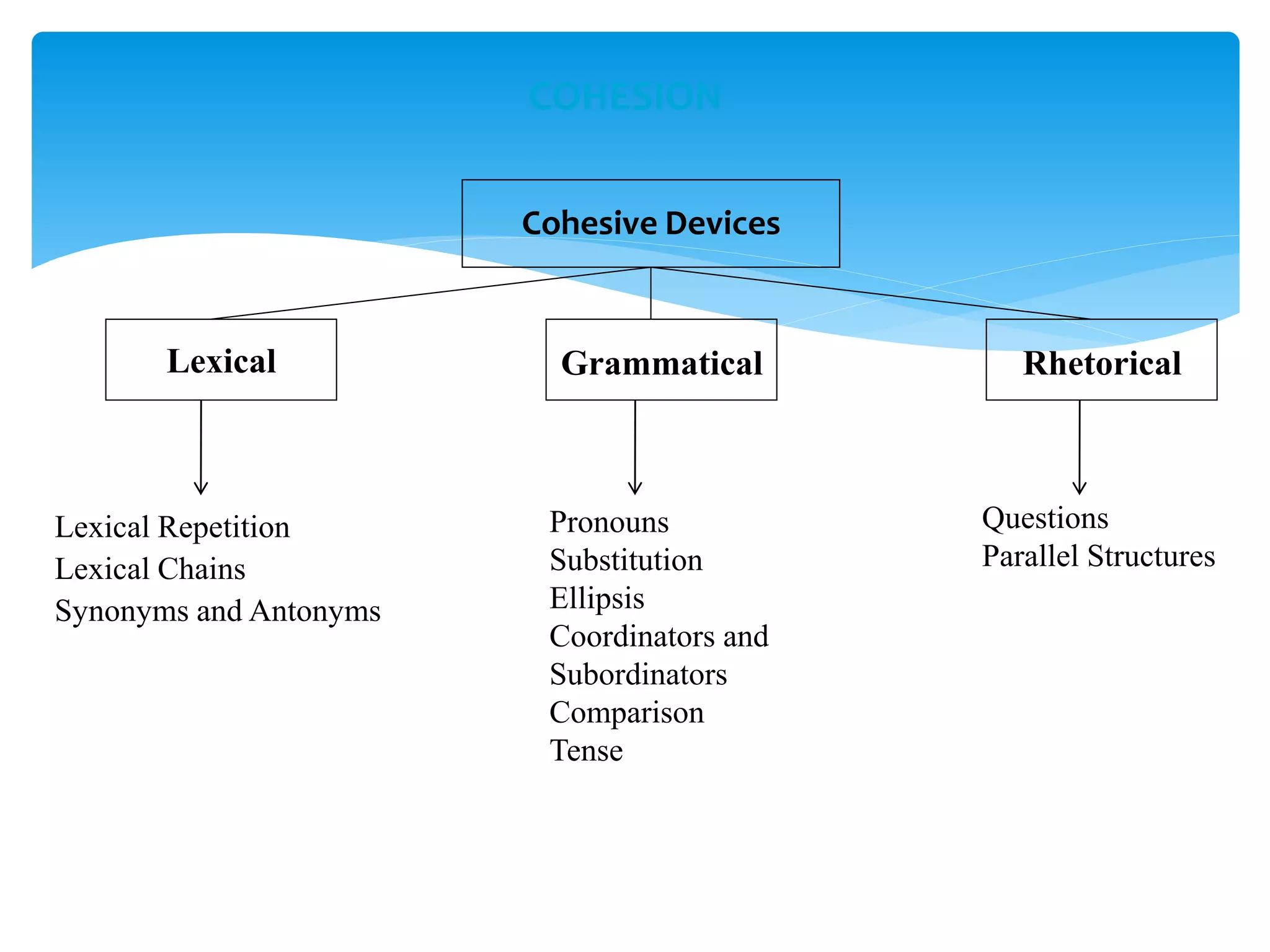The document provides an introduction to discourse analysis. It defines discourse as language use beyond the sentence level, including features such as being meaningful, coherent, and purposive. Discourse analysis examines language in use and how context contributes to meaning. Speech act theory and Grice's cooperative principle are discussed as are key concepts like adjacency pairs in conversation analysis. The document offers examples throughout to illustrate discourse analysis concepts and techniques.
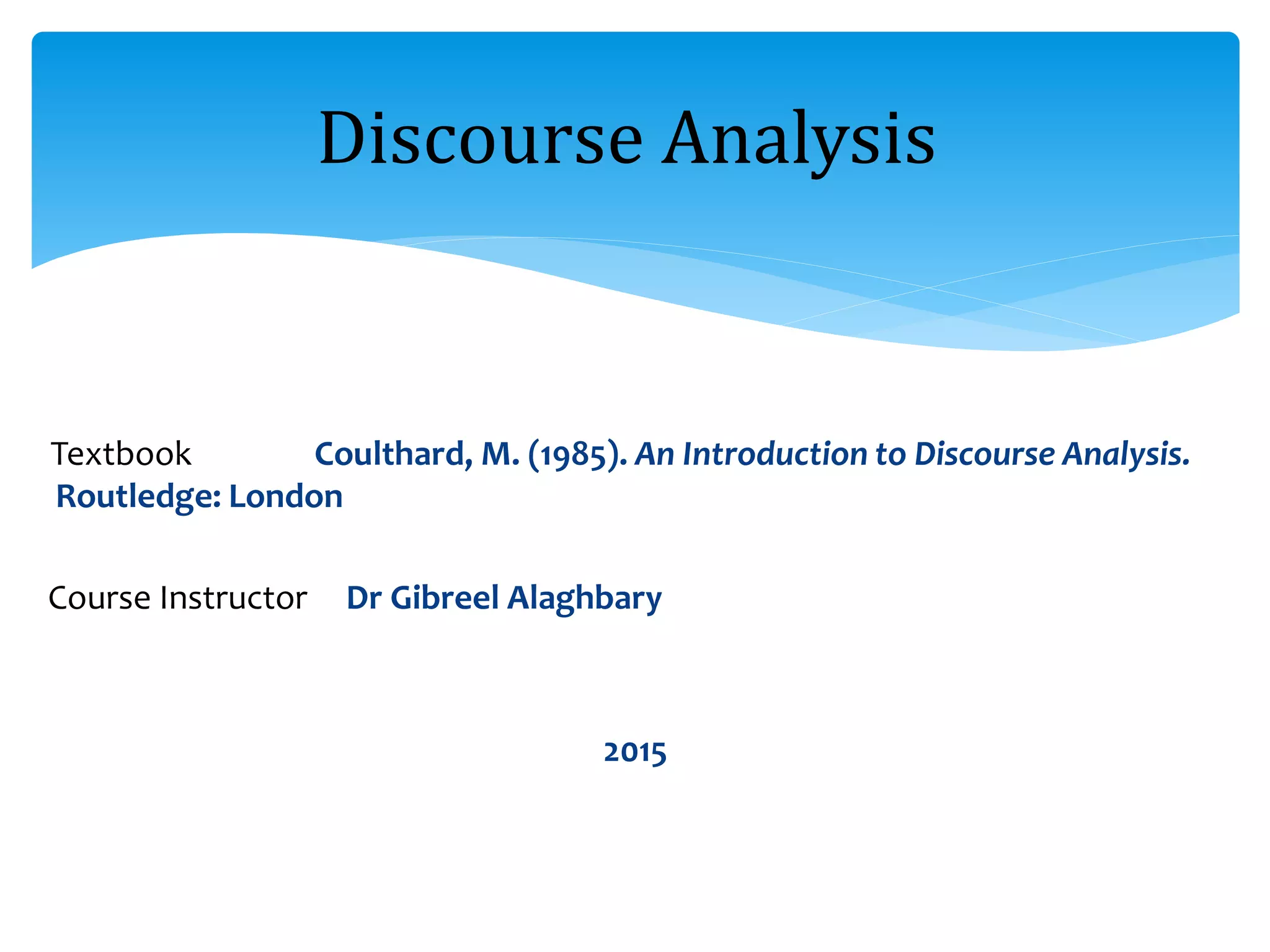
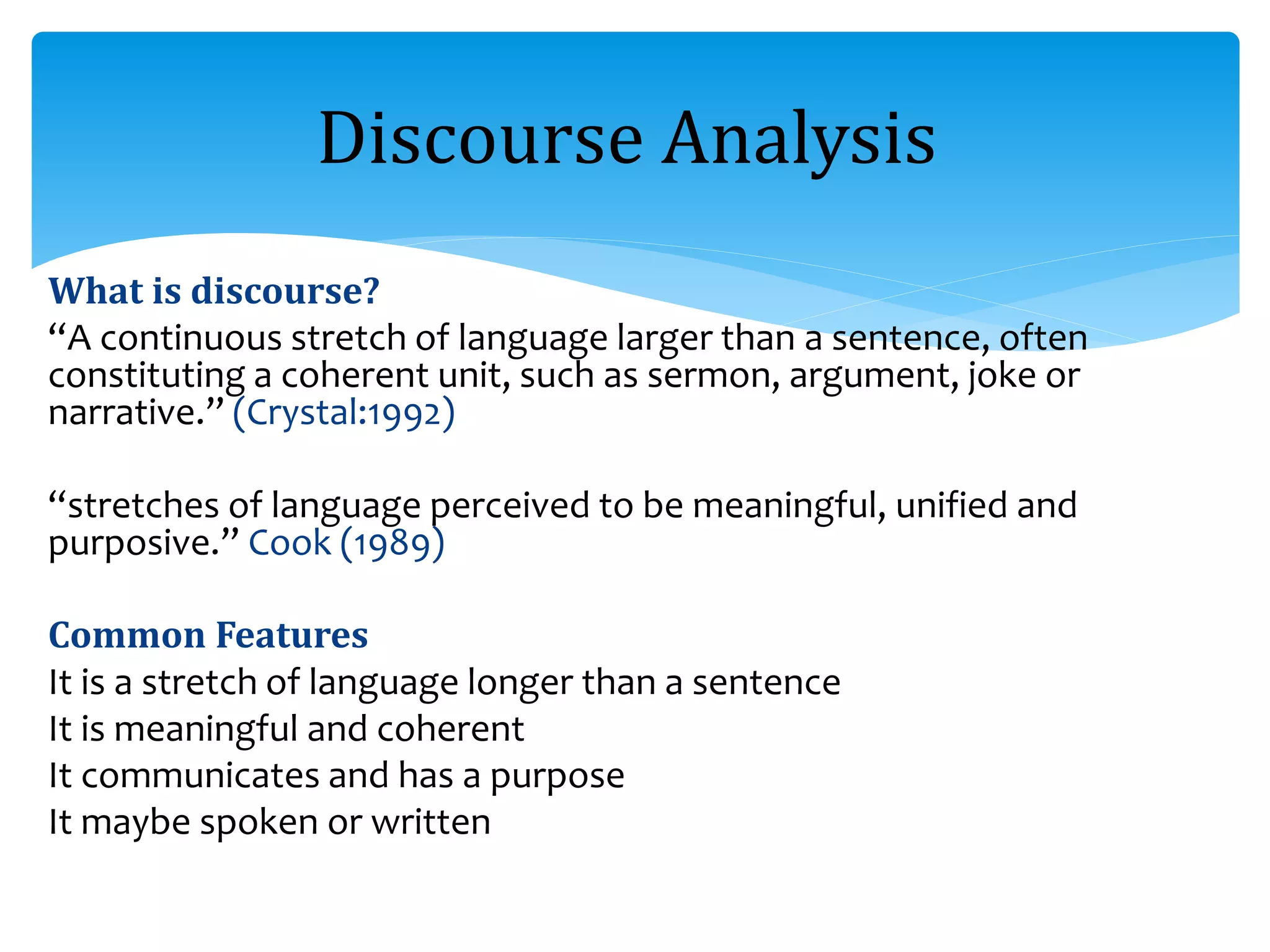
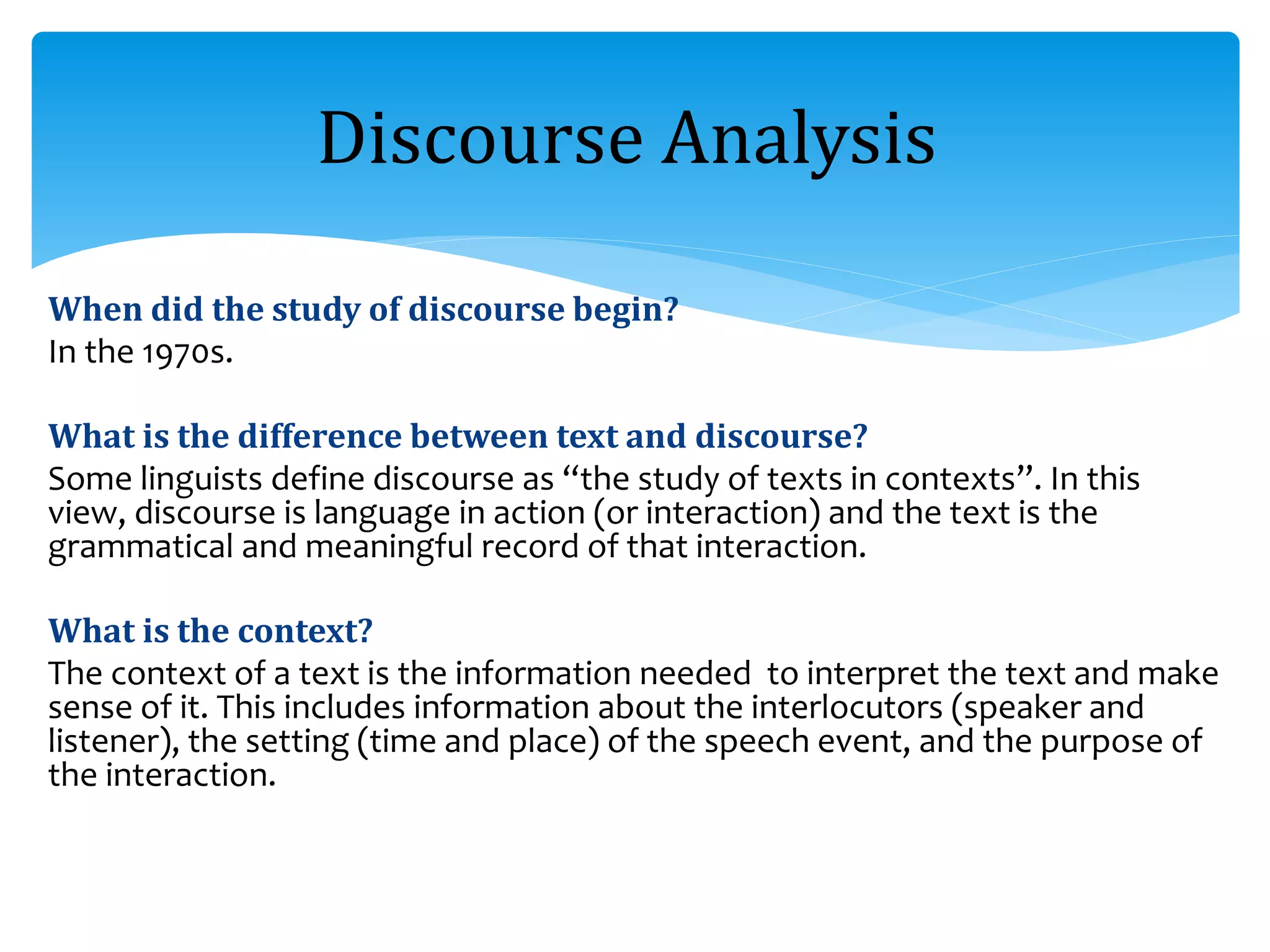
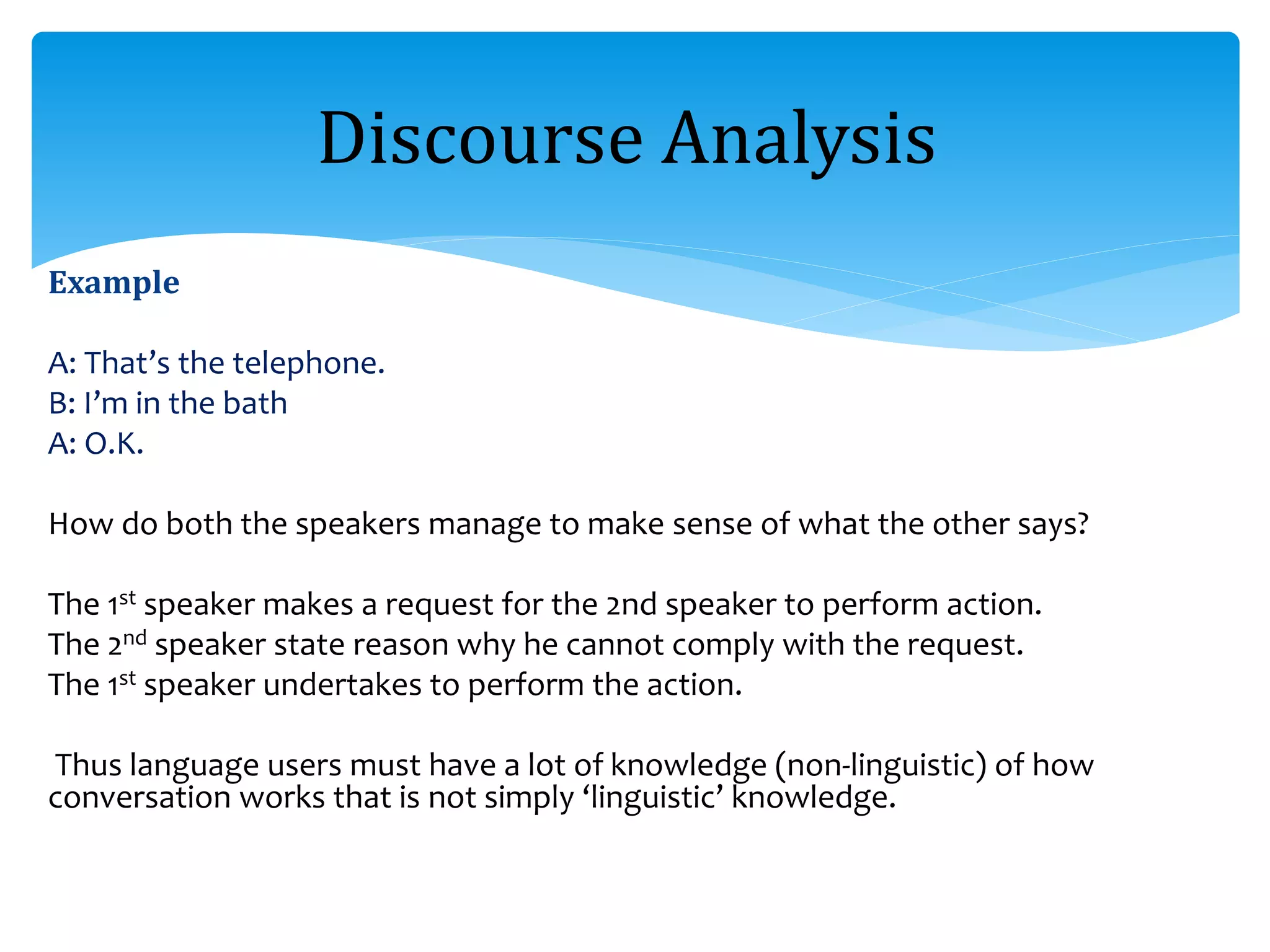


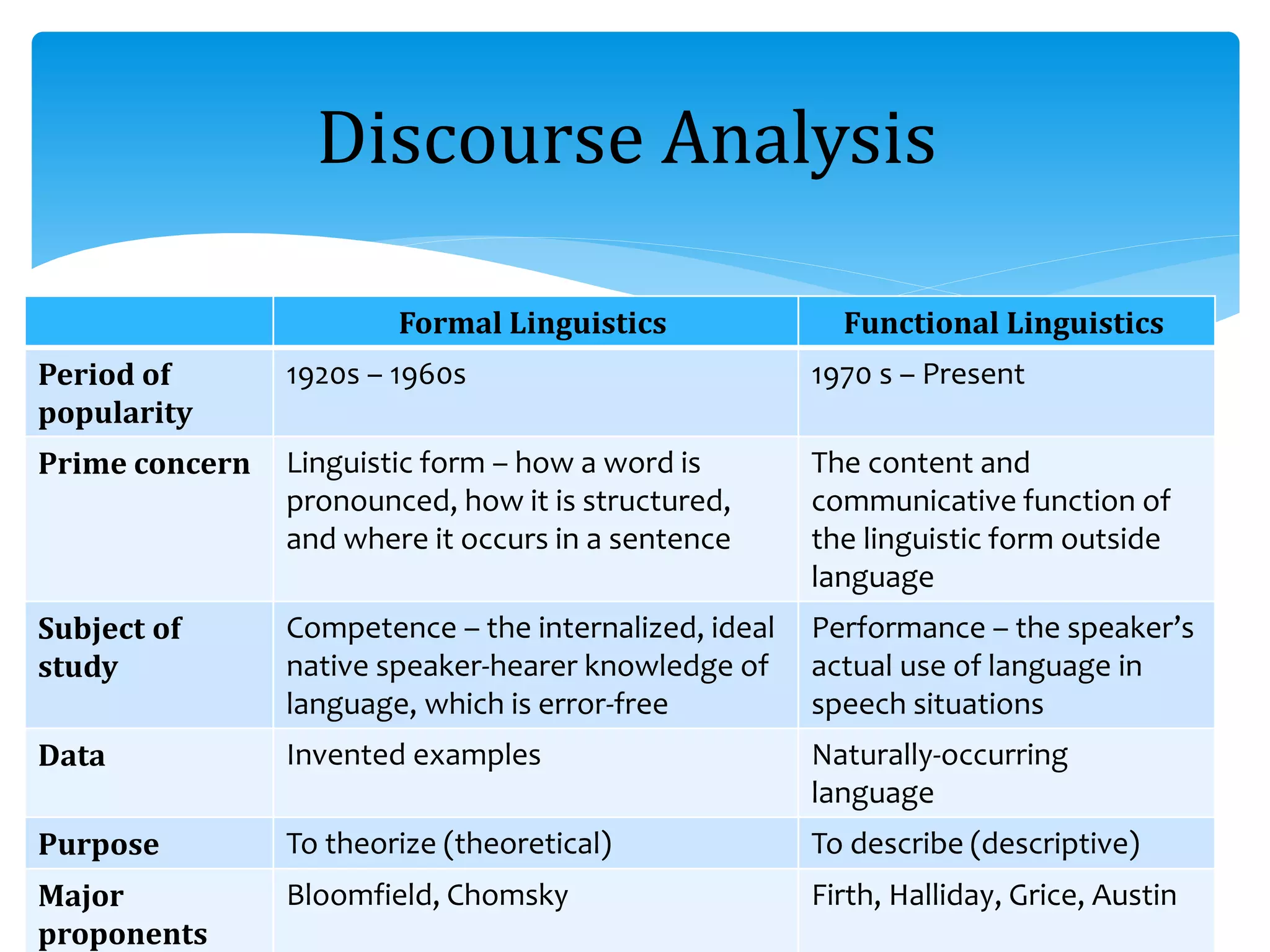

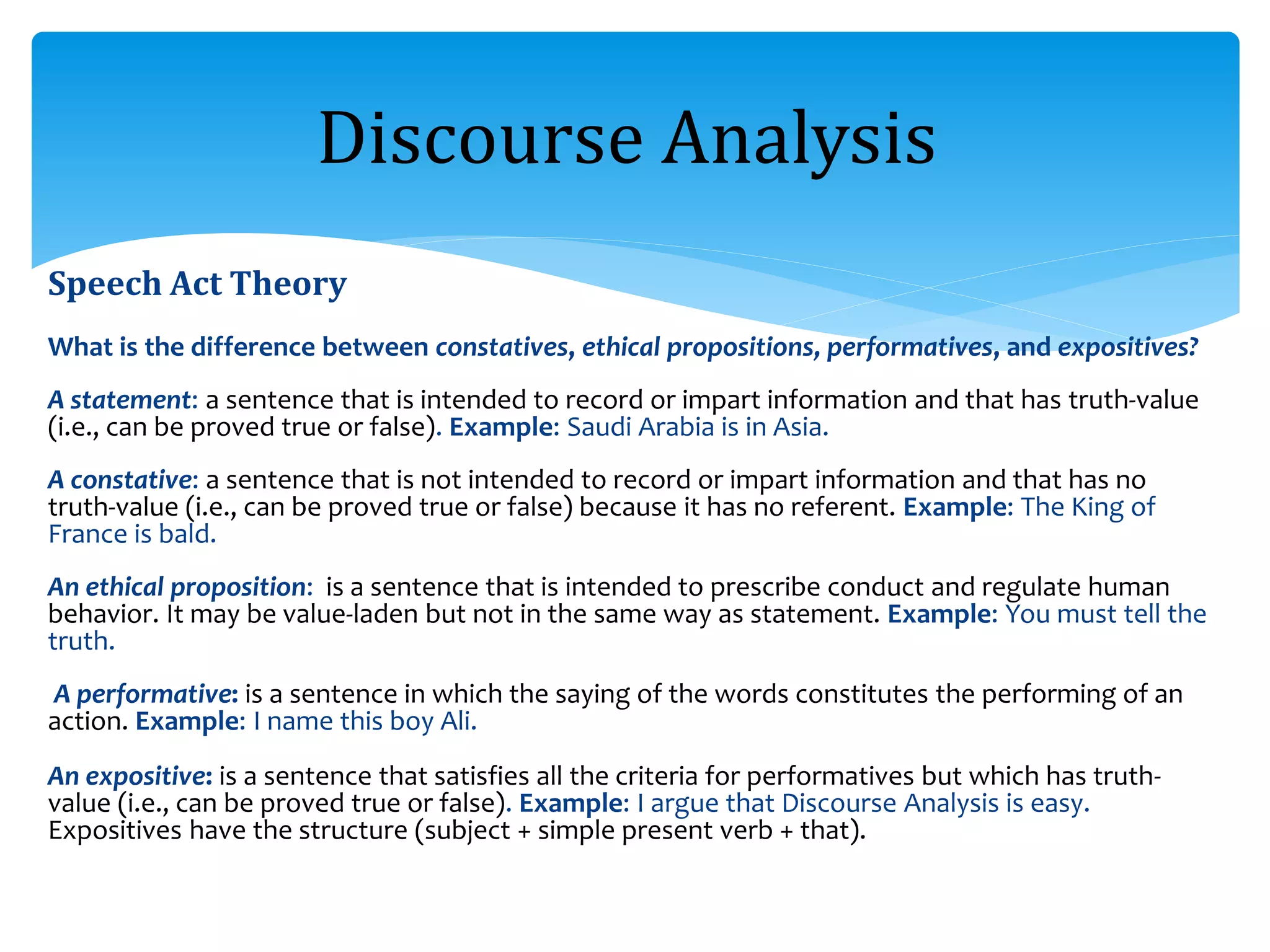
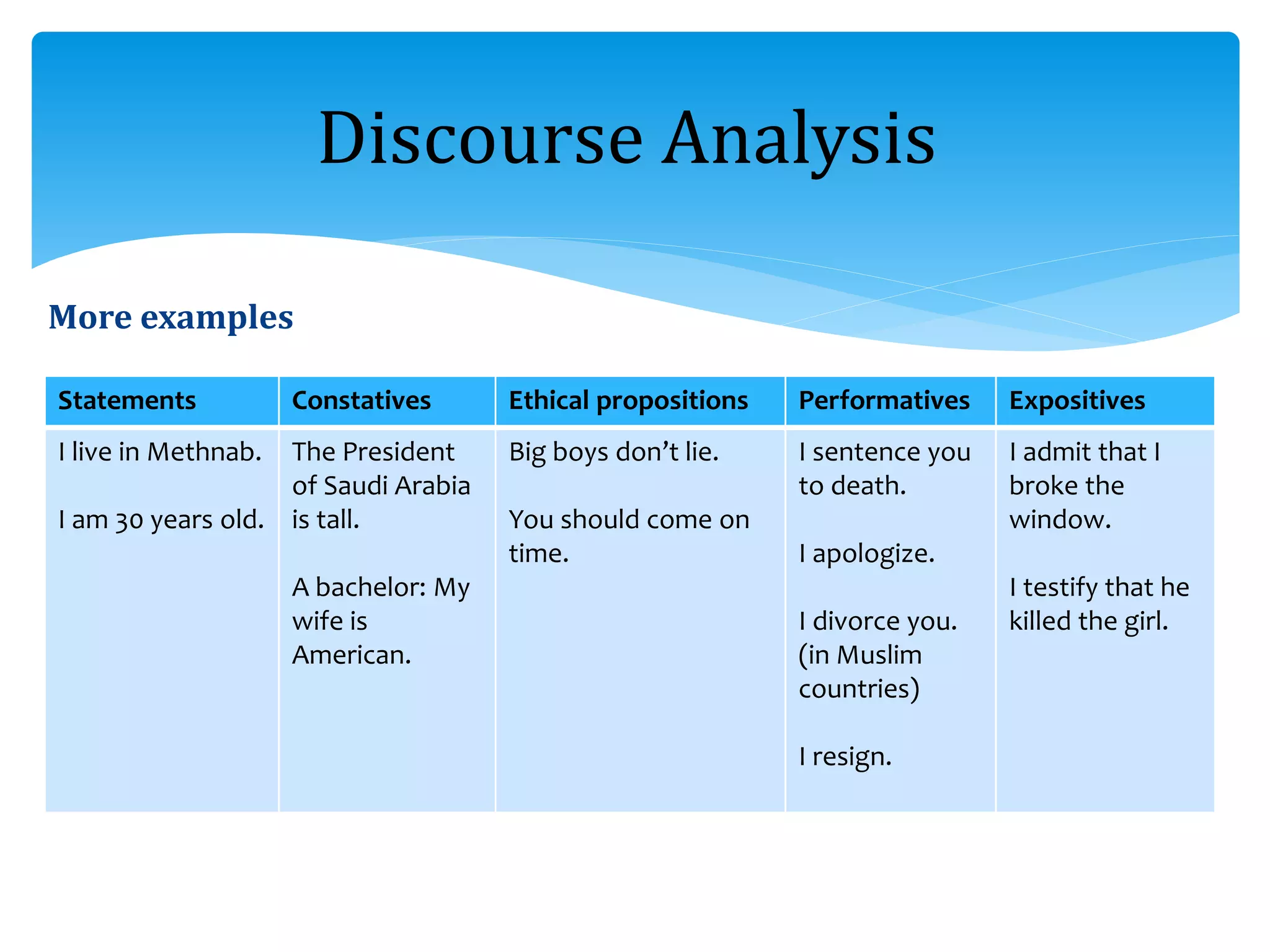
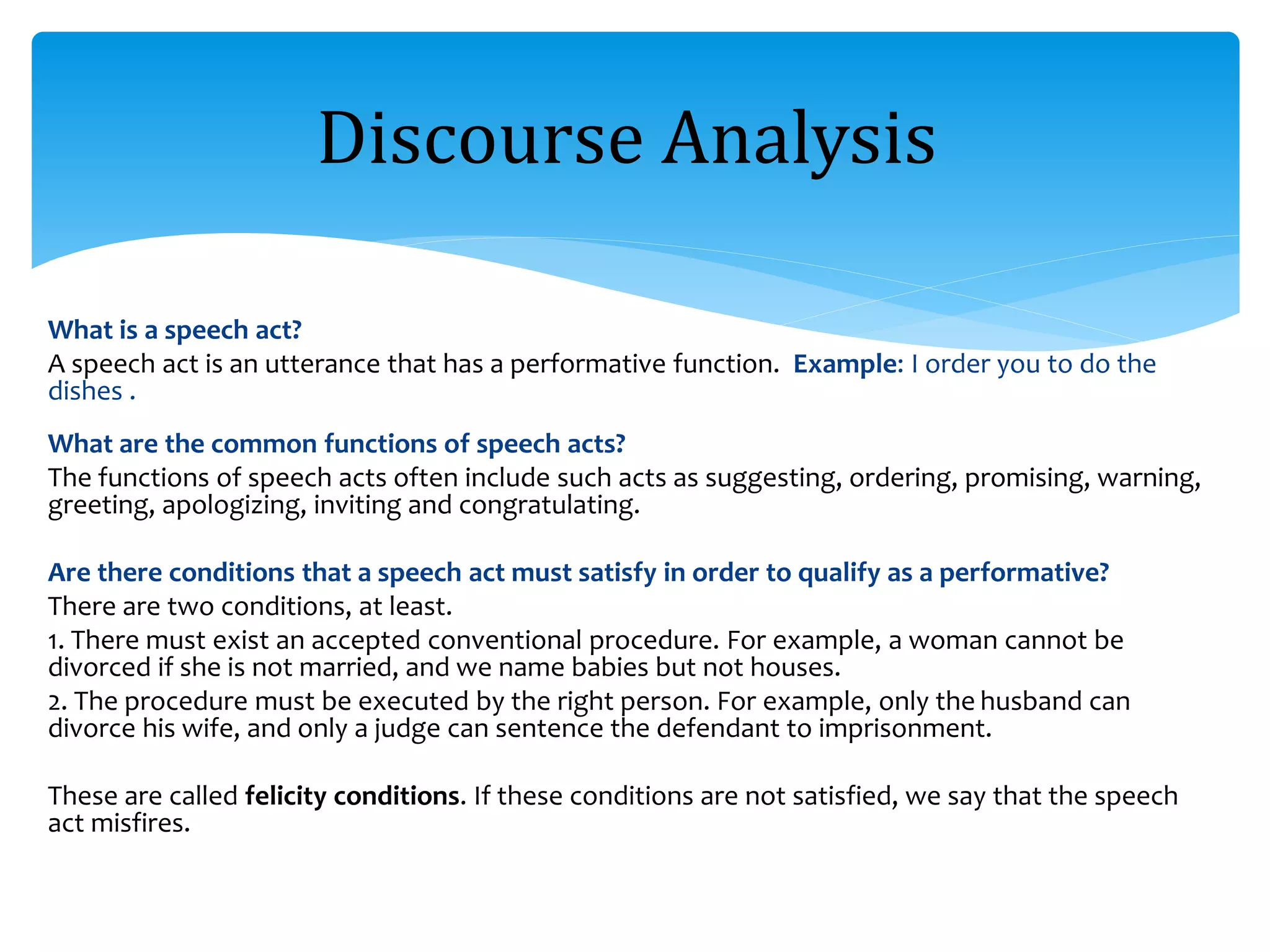
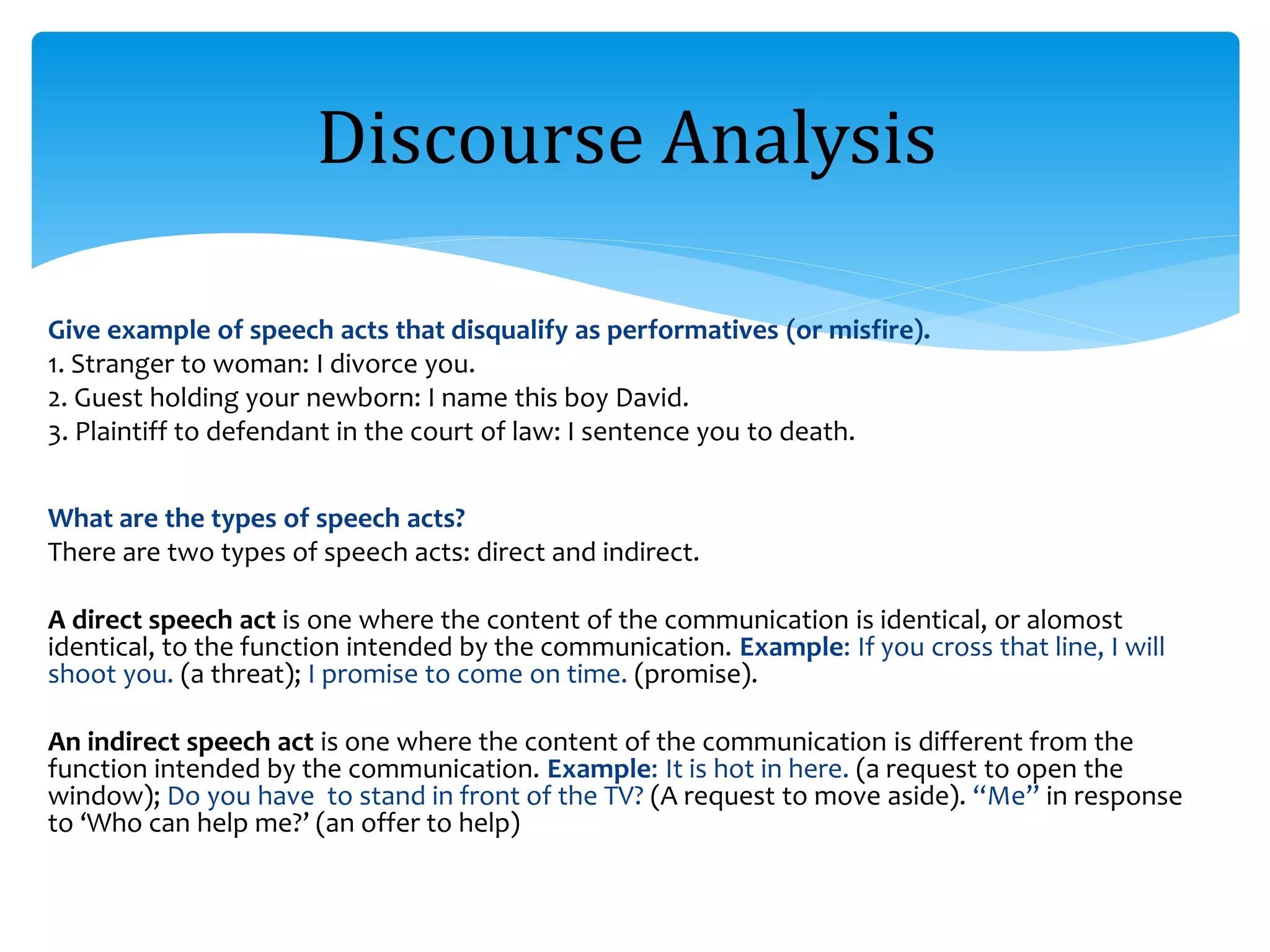
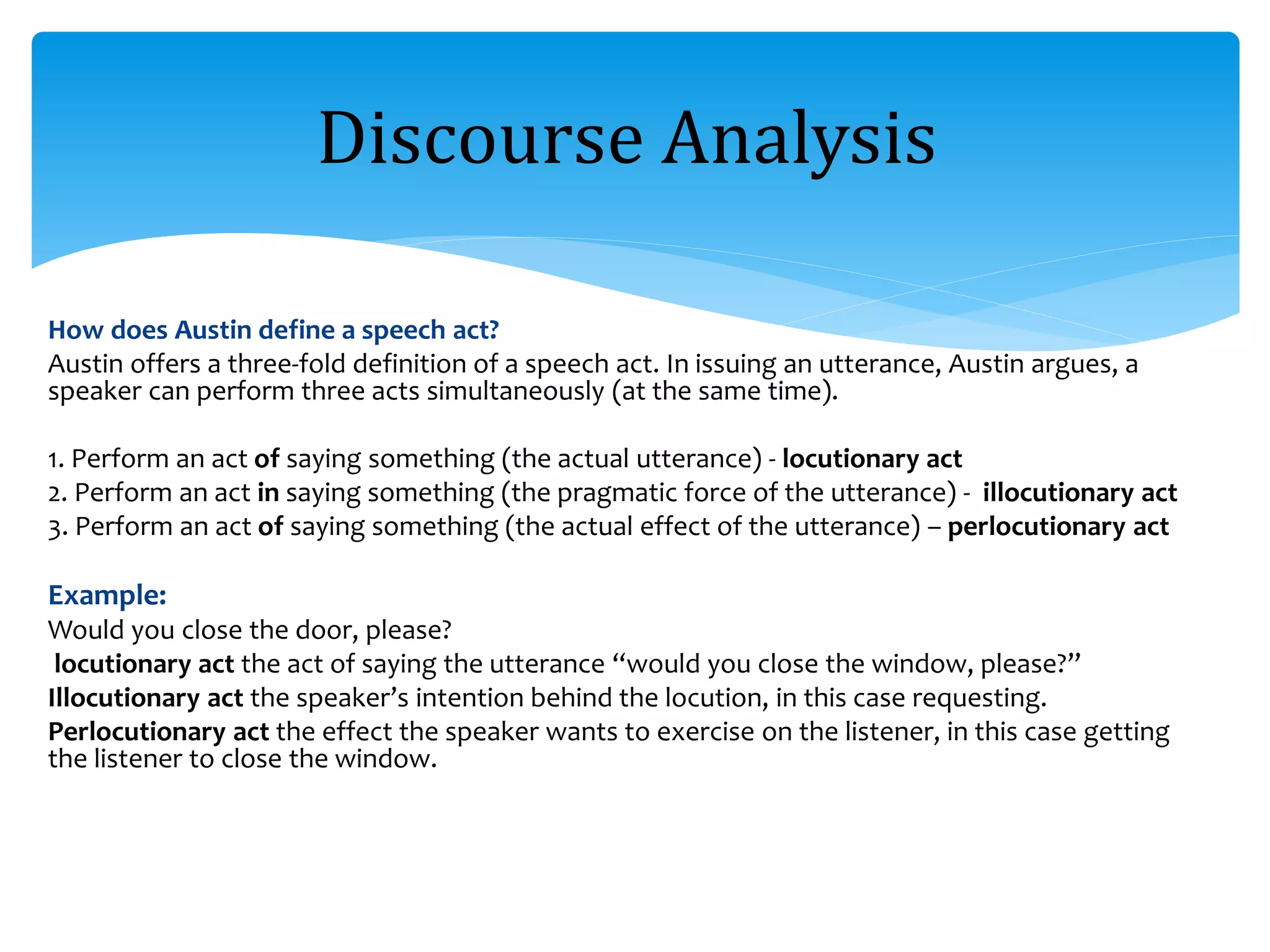
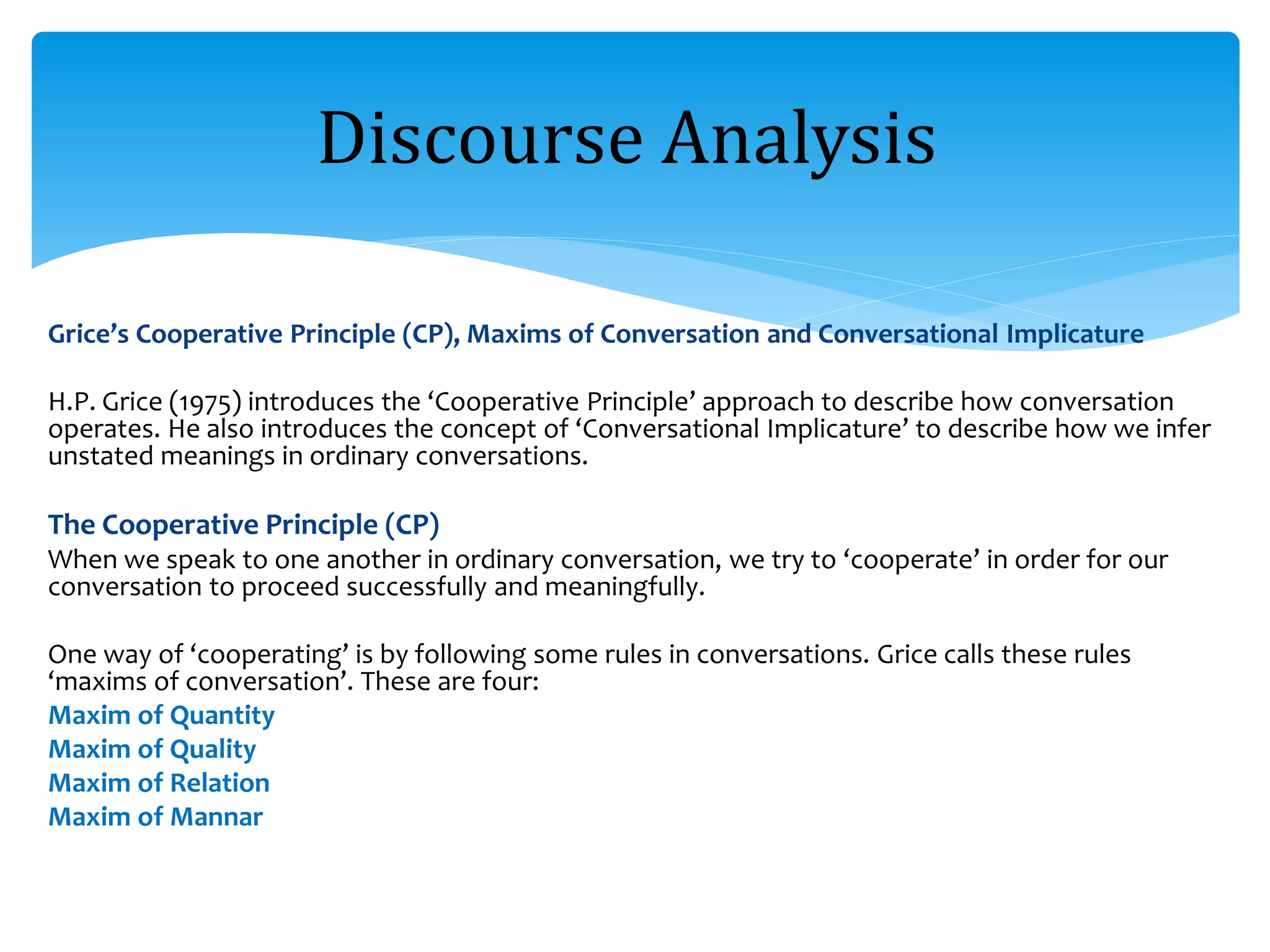


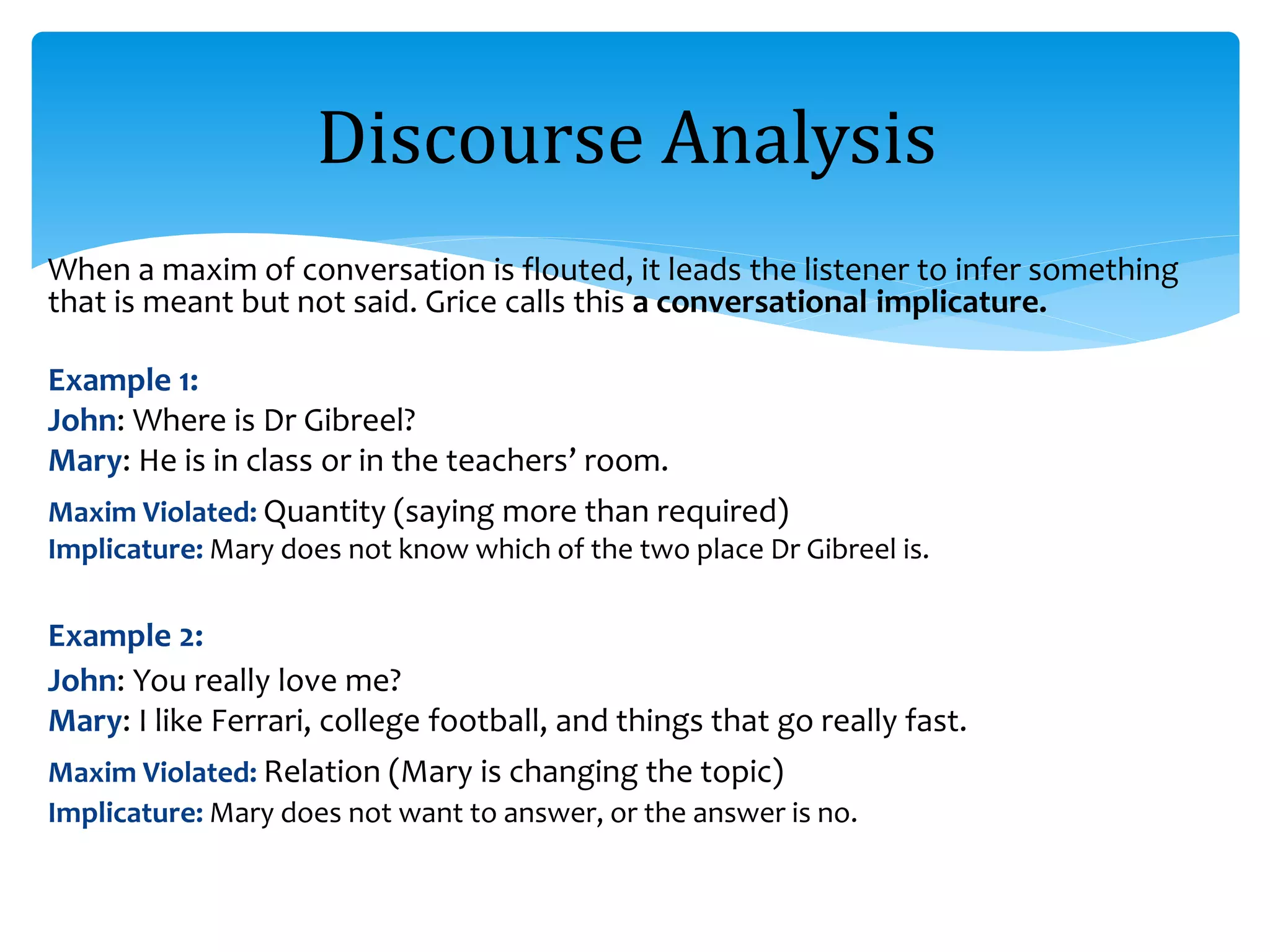
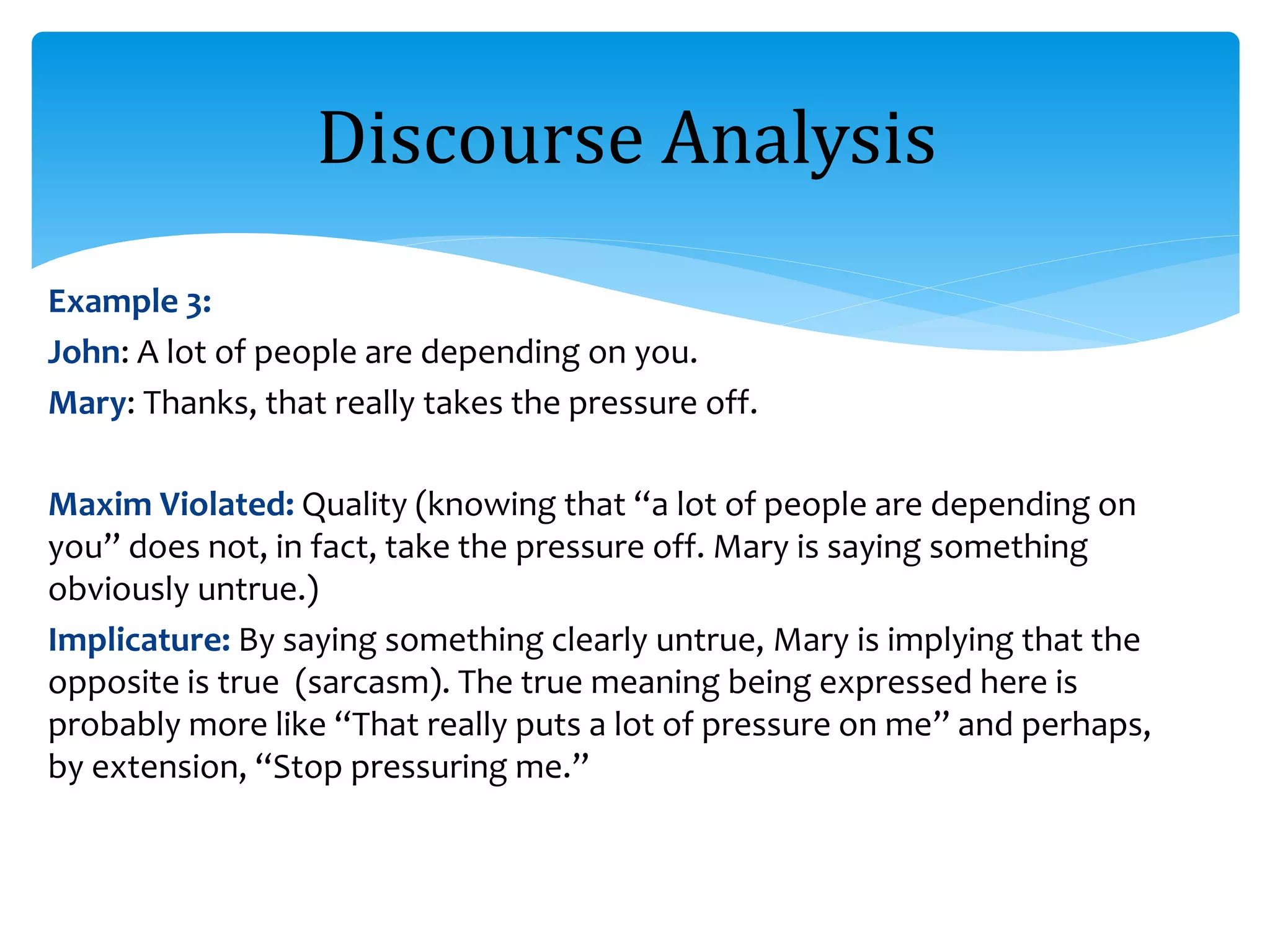
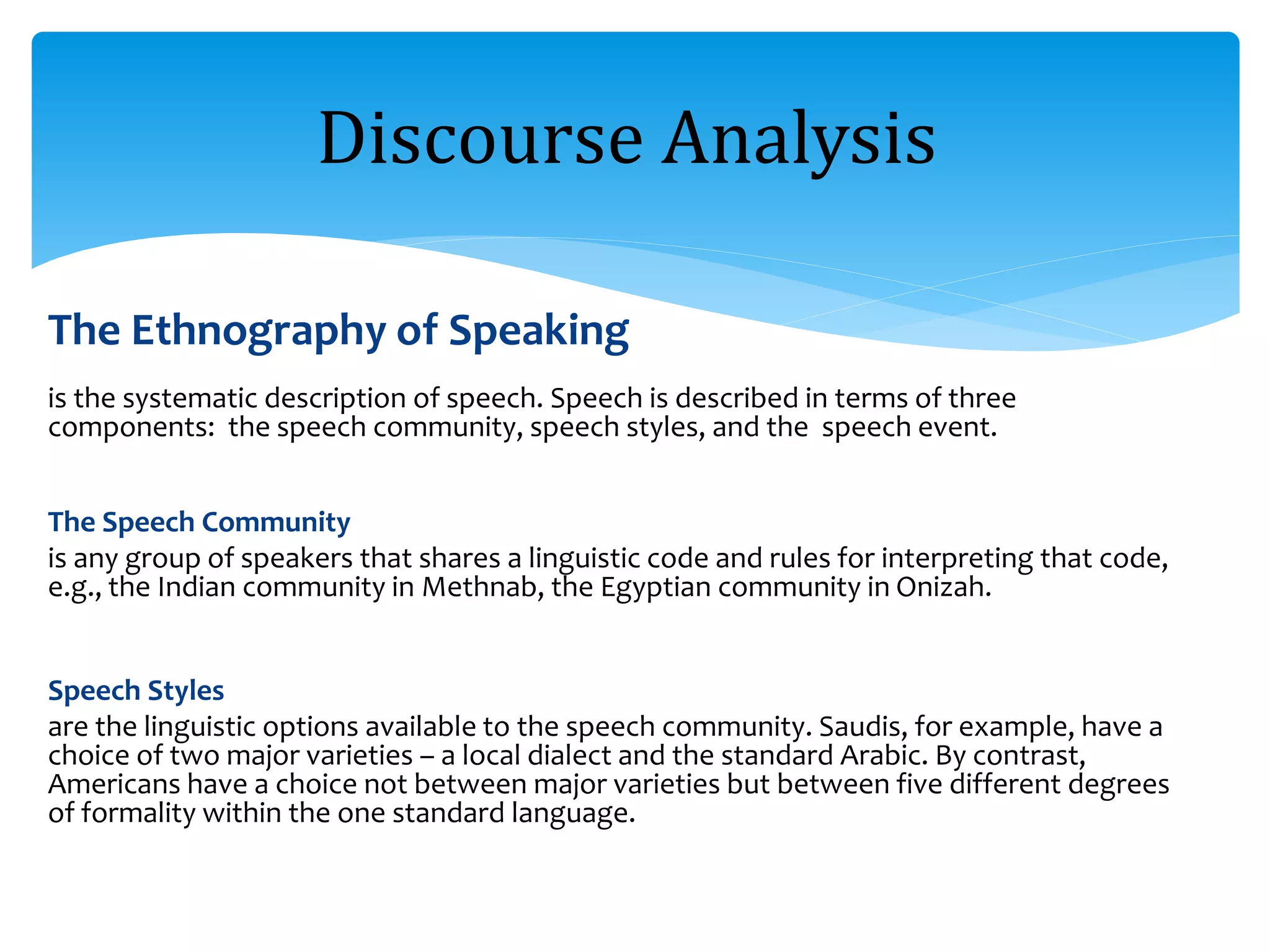
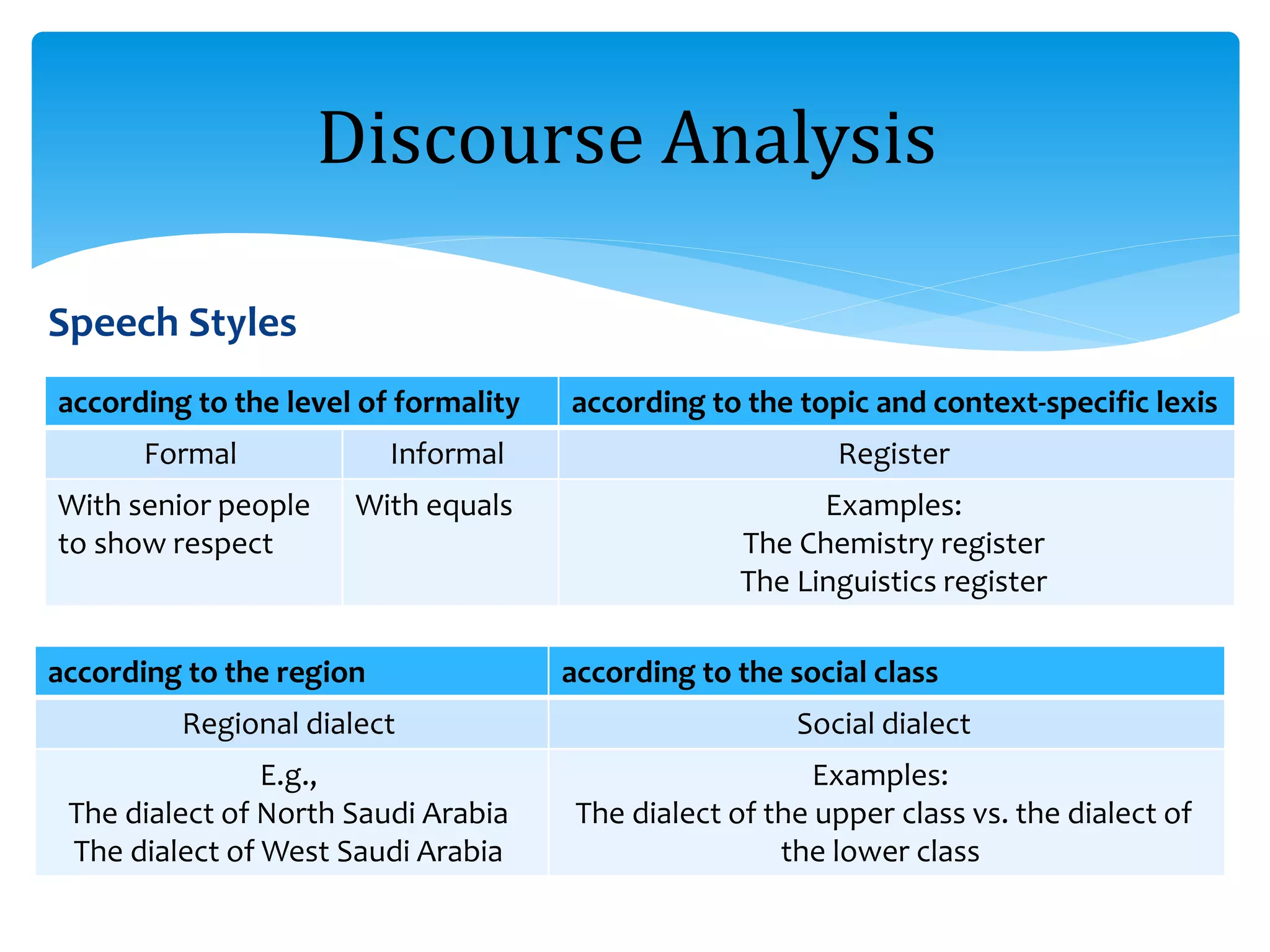
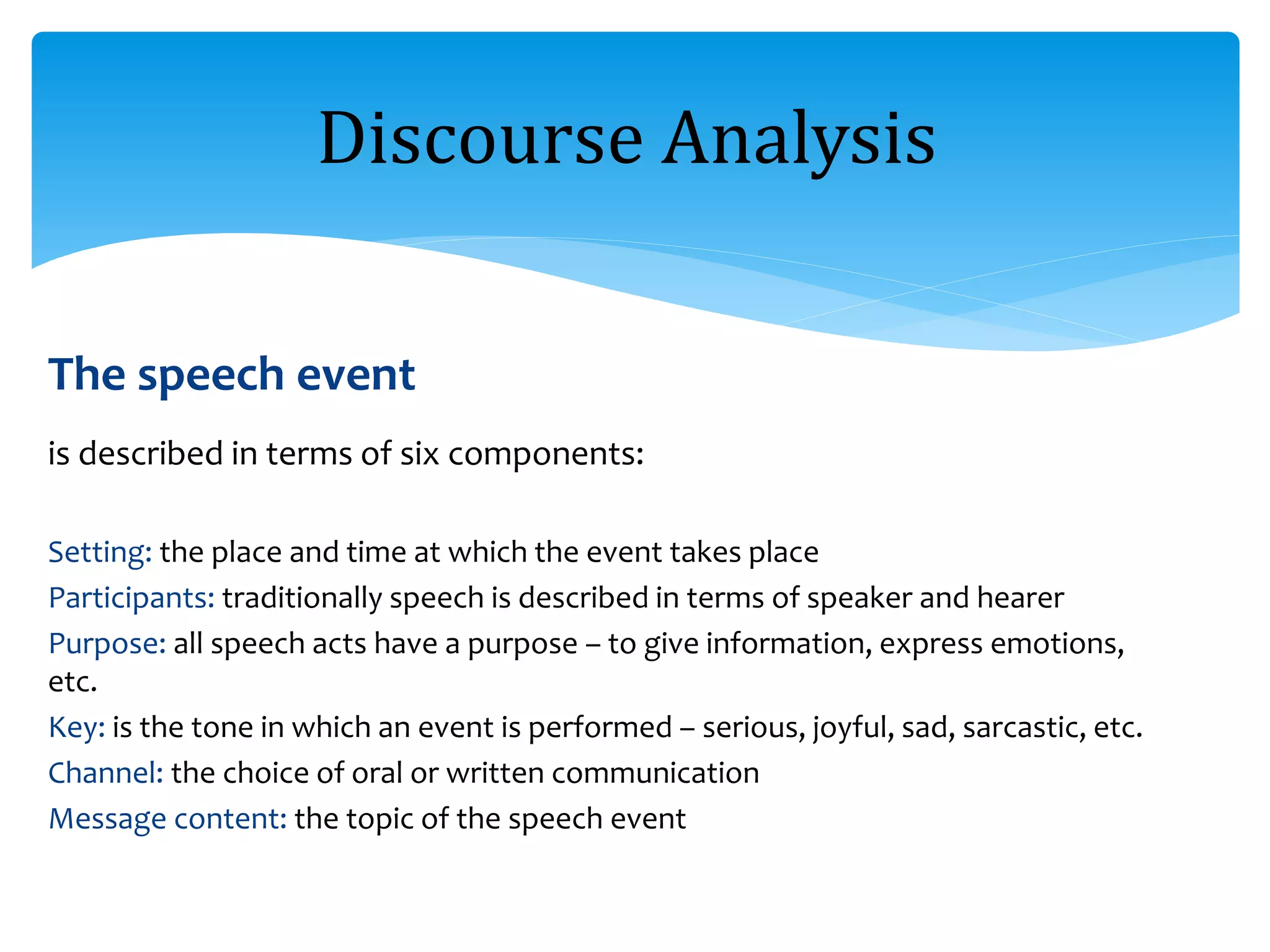
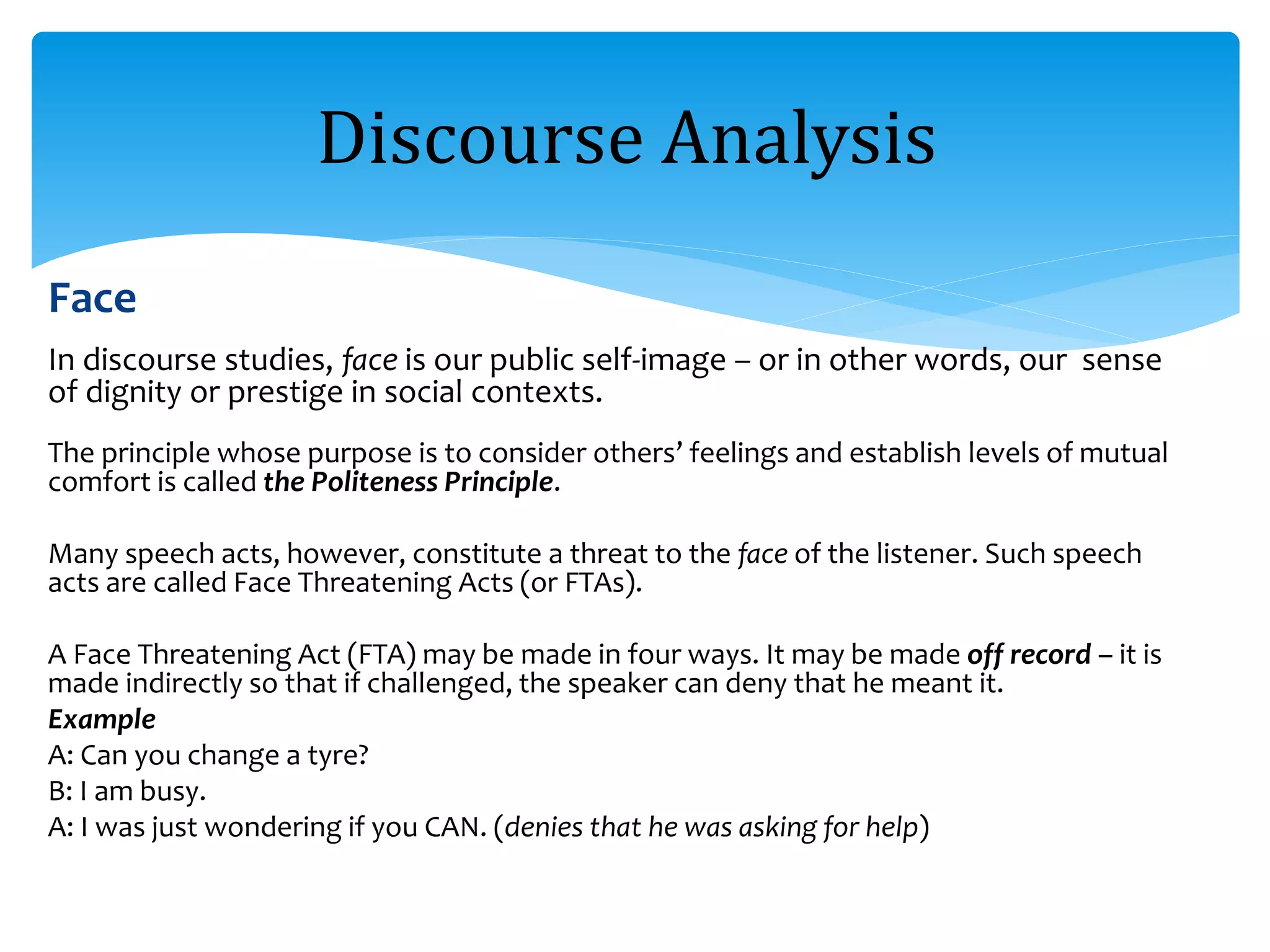
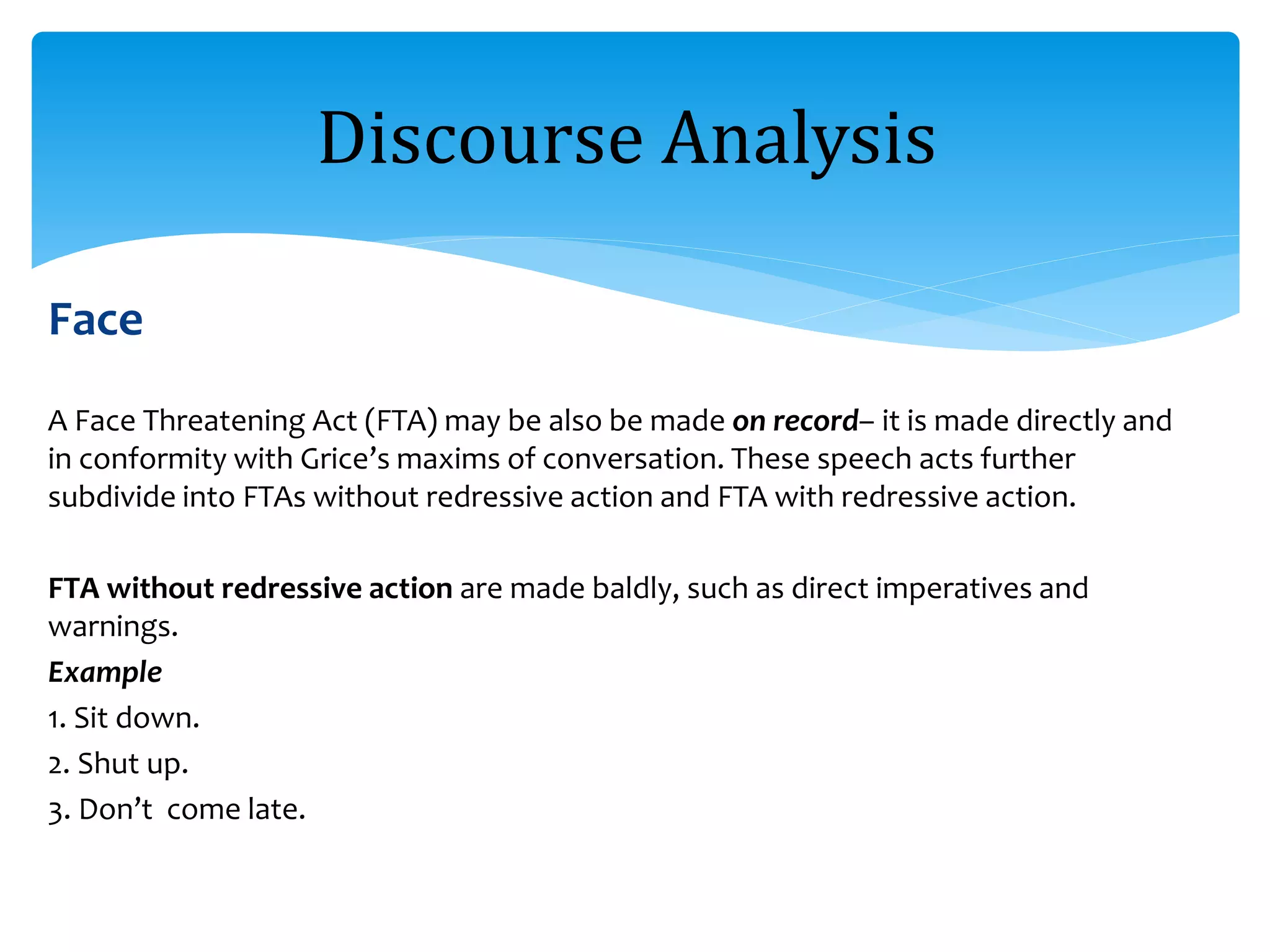


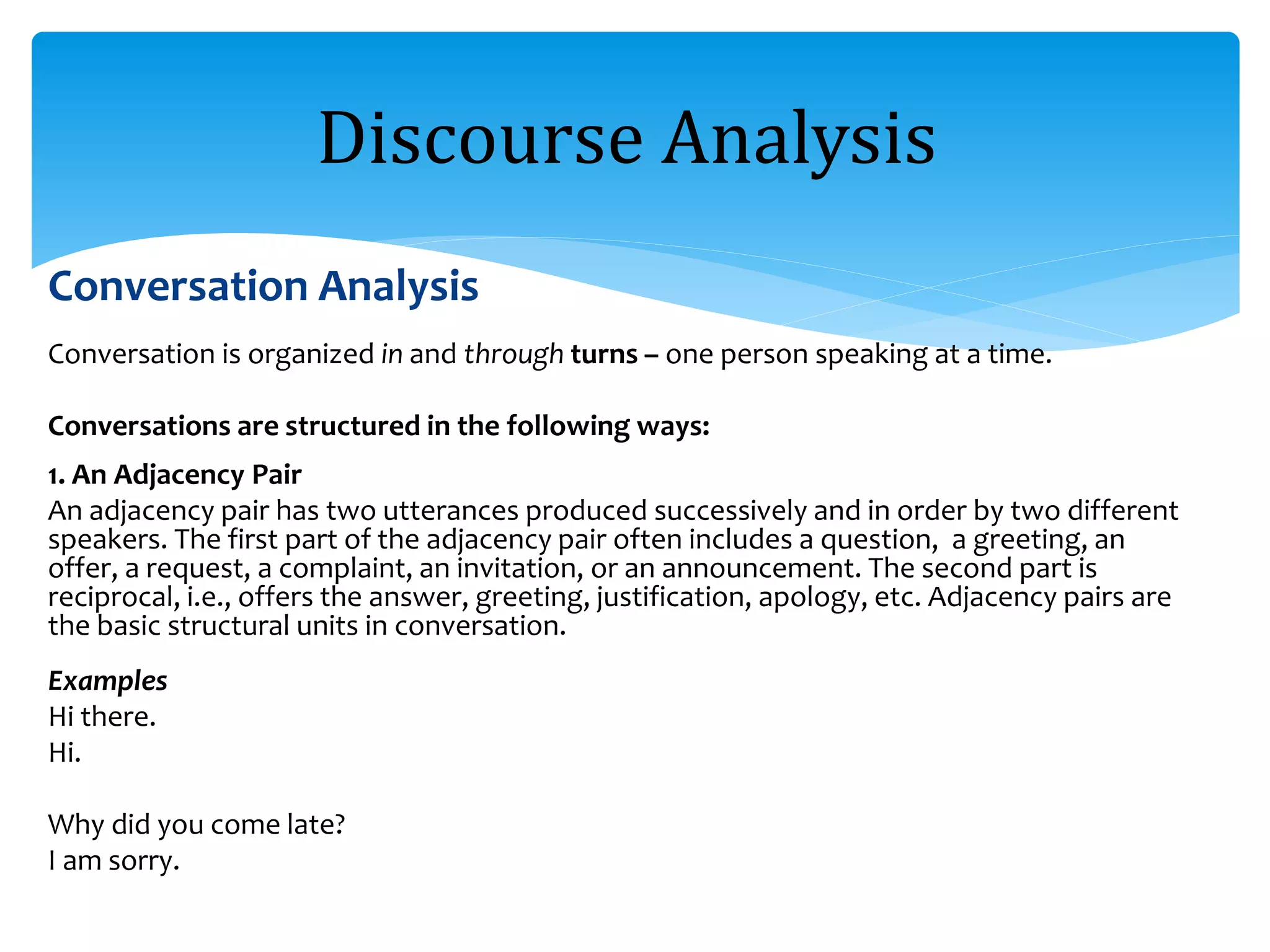

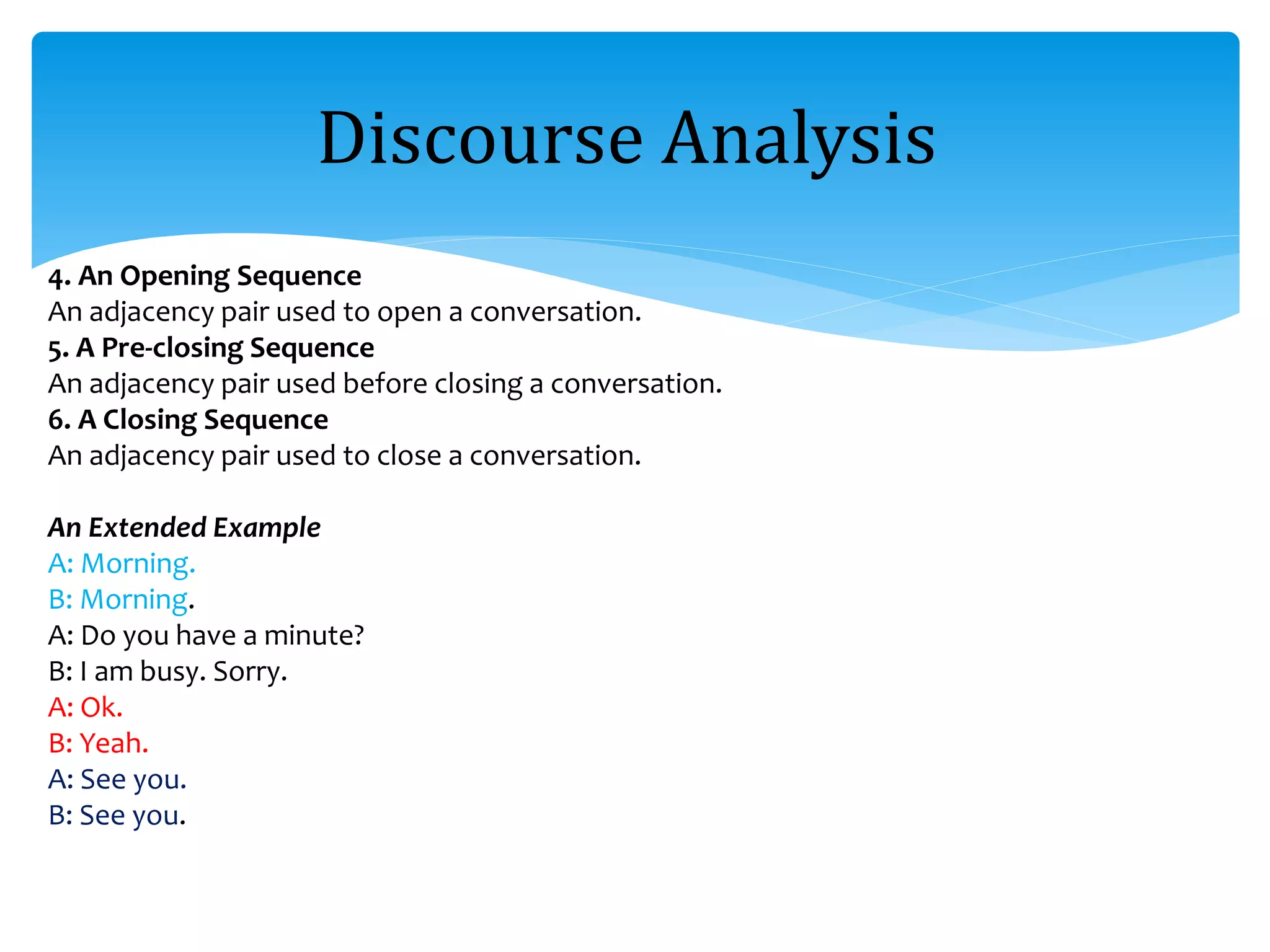
![Features of Naturally-Occuring Conversations
Pauses .. a very short period of silence (e.g., I went to [silence] London.)
Pause Fillers .. sounds or words used to avoid silence in conversations, such as um, er, uh, I mean,
y’know, like (e.g. I went to um London.)
False starts … a start that a speaker realizes is wrong and amends or repairs (e.g., I went ..um..
Indeed my wife and I went to London.)
Recycling … a repaired false start (e.g., Indeed my wife and I in the previous example)
Back channel support … a word or an expression the listener uses to indicate they are following
or indicate interest in the conversation (e.g.,
A: I went to London …
B: Ok.
A: … and had a lot of fun.
Interruption … to stop a speaker from finishing their turn (e.g.,
A: I went to …
B: I have to go now. Bye.
Overlap … happens when two speakers talk at the same time. It may be intentional (when the
listener does not want to listen to the speaker for some reason) and it may be unintentional,
which is often resolved by one of the two participants yielding or offering the floor – giving the
right to the other participant to continue.
Discourse Analysis](https://image.slidesharecdn.com/discourseanalysis-150813213334-lva1-app6891/75/Discourse-analysis-29-2048.jpg)
